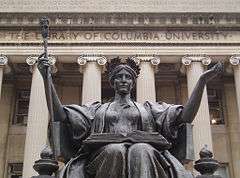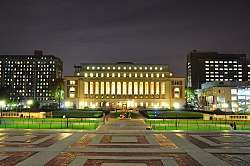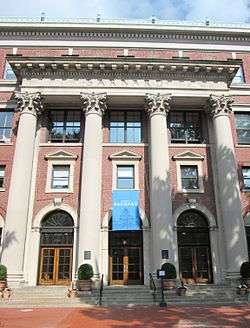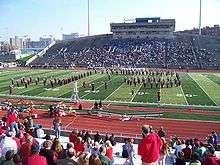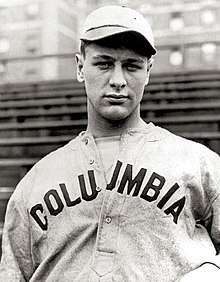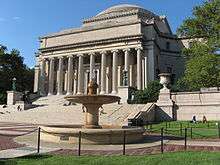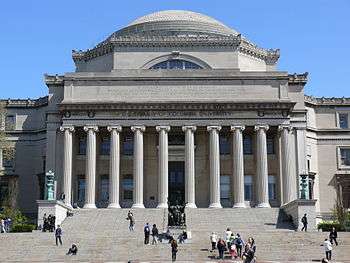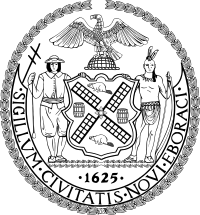Columbia University
Columbia University (also known as Columbia, and officially as Columbia University in the City of New York) is a private Ivy League research university in New York City. Established in 1754 on the grounds of Trinity Church in Manhattan, Columbia is the oldest institution of higher education in New York and the fifth-oldest institution of higher learning in the United States. It is one of nine colonial colleges founded prior to the Declaration of Independence, seven of which belong to the Ivy League.[8]
Columbia University in the City of New York | |
 | |
| Latin: Universitas Columbiae Neo Eboracensis[1] | |
Former names | King's College (1754–1784) Columbia College (1784–1896)[2]:53–60 |
|---|---|
| Motto | In lumine Tuo videbimus lumen (Latin) |
Motto in English | In Thy light shall we see light[3] (Psalms 36:9) |
| Type | Royal (1754–1776) Private (1776–present) |
| Established | May 25, 1754 |
Academic affiliations | AAU URA 568 Group NAICU |
| Endowment | $10.9 billion (2019)[4] |
| President | Lee Bollinger |
| Provost | Ira Katznelson interim |
Academic staff | 4,370[5] |
| Students | 33,413 (Fall 2019)[6] |
| Undergraduates | 9,001 (Fall 2019)[6] |
| Postgraduates | 24,412 (Fall 2019)[6] |
| Location | , , United States 40°48′27″N 73°57′43″W |
| Campus | Urban, total 299 acres (1.21 km2) |
| Colors | Columbia Blue and White[7] |
| Nickname | Lions |
Sporting affiliations | NCAA Division I – Ivy League, EARC MAISA (sailing) |
| Mascot | Roaree the Lion |
| Website | columbia |
Columbia was established as King's College by royal charter of George II of Great Britain in reaction to the founding of Princeton College.[9] It was renamed Columbia College in 1784 following the American Revolution, and in 1787 was placed under a private board of trustees headed by former students Alexander Hamilton and John Jay. In 1896, the campus was moved to its current location in Morningside Heights and renamed Columbia University.[10][11][12]
Columbia scientists and scholars have played an important role in scientific breakthroughs including: brain-computer interface;[13][14][15] the laser and maser;[16][17] nuclear magnetic resonance;[18] the first nuclear pile;[19] the first nuclear fission reaction in the Americas;[20] the first evidence for plate tectonics and continental drift;[21][22][23] and much of the initial research and planning for the Manhattan Project during World War II. Columbia is organized into twenty schools, including three undergraduate schools and numerous graduate schools. The university's research efforts include the Lamont–Doherty Earth Observatory, the Goddard Institute for Space Studies, and accelerator laboratories with major technology firms such as IBM.[24] Columbia is a founding member of the Association of American Universities and was the first school in the United States to grant the M.D. degree.[10][25] With over 14 million volumes, Columbia University Library is the third largest private research library in the United States.[26]
Columbia is ranked 3rd in the U.S. News & World Report Best Colleges Ranking after Princeton and Harvard. The university's endowment stood at $10.9 billion in 2019, among the largest of any academic institution.[27] As of 2018, Columbia's alumni and affiliates include: five Founding Fathers of the United States—among them an author of the United States Constitution and a co-author of the Declaration of Independence; three U.S. presidents; 29 foreign heads of state; ten justices of the United States Supreme Court, two of whom currently serve; 96 Nobel laureates; 101 National Academy of Sciences members; 53 living billionaires;[28] eleven Olympic medalists; 33 Academy Award winners; and 125 Pulitzer Prize recipients.
History
Colonial period
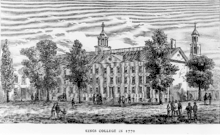
Discussions regarding the founding of a college in the Province of New York began as early as 1704, at which time Colonel Lewis Morris wrote to the Society for the Propagation of the Gospel in Foreign Parts, the missionary arm of the Church of England, persuading the society that New York City was an ideal community in which to establish a college.[9] However, it was not until the founding of the College of New Jersey (renamed Princeton) across the Hudson River in New Jersey that the City of New York seriously considered founding a college.[9] In 1746, an act was passed by the general assembly of New York to raise funds for the foundation of a new college. In 1751, the assembly appointed a commission of ten New York residents, seven of whom were members of the Church of England, to direct the funds accrued by the state lottery towards the foundation of a college.[29]
Classes were initially held in July 1754 and were presided over by the college's first president, Dr. Samuel Johnson.[30]:8–10 Dr. Johnson was the only instructor of the college's first class, which consisted of a mere eight students. Instruction was held in a new schoolhouse adjoining Trinity Church, located on what is now lower Broadway in Manhattan.[31]:3 The college was officially founded on October 31, 1754, as King's College by royal charter of King George II, making it the oldest institution of higher learning in the state of New York and the fifth oldest in the United States.[10]
In 1763, Dr. Johnson was succeeded in the presidency by Myles Cooper, a graduate of The Queen's College, Oxford, and an ardent Tory. In the charged political climate of the American Revolution, his chief opponent in discussions at the college was an undergraduate of the class of 1777, Alexander Hamilton.[31]:3 The American Revolutionary War broke out in 1776, and was catastrophic for the operation of King's College, which suspended instruction for eight years beginning in 1776 with the arrival of the Continental Army. The suspension continued through the military occupation of New York City by British troops until their departure in 1783. The college's library was looted and its sole building requisitioned for use as a military hospital first by American and then British forces.[32][33] Loyalists were forced to abandon their King's College in New York, but some led by Bishop Charles Inglis fled to Windsor, Nova Scotia, where they founded King's Collegiate School.[34]
18th century

After the Revolution, the college turned to the State of New York in order to restore its vitality, promising to make whatever changes to the school's charter the state might demand.[30]:59 The legislature agreed to assist the college, and on May 1, 1784, it passed "an Act for granting certain privileges to the College heretofore called King's College".[35] The Act created a Board of Regents to oversee the resuscitation of King's College, and, in an effort to demonstrate its support for the new Republic, the legislature stipulated that "the College within the City of New York heretofore called King's College be forever hereafter called and known by the name of Columbia College",[35] a reference to Columbia, an alternative name for America. The Regents finally became aware of the college's defective constitution in February 1787 and appointed a revision committee, which was headed by John Jay and Alexander Hamilton. In April of that same year, a new charter was adopted for the college granted the power to a private board of 24 trustees.[2]:65–70
On May 21, 1787, William Samuel Johnson, the son of Dr. Samuel Johnson, was unanimously elected president of Columbia College. Prior to serving at the university, Johnson had participated in the First Continental Congress and been chosen as a delegate to the Constitutional Convention.[36] For a period in the 1790s, with New York City as the federal and state capital and the country under successive Federalist governments, a revived Columbia thrived under the auspices of Federalists such as Hamilton and Jay. Both President George Washington and Vice President John Adams attended the college's commencement on May 6, 1789, as a tribute of honor to the many alumni of the school who had been involved in the American Revolution.[30]:74
.jpg)
19th century to present
_p598_NYC%2C_COLUMBIA_COLLEGE.jpg)
In November 1813, the college agreed to incorporate its medical school with The College of Physicians and Surgeons, a new school created by the Regents of New York, forming Columbia University College of Physicians and Surgeons.[2]:53–60 The college's enrollment, structure, and academics stagnated for the majority of the 19th century, with many of the college presidents doing little to change the way that the college functioned. In 1857, the college moved from the King's College campus at Park Place to a primarily Gothic Revival campus on 49th Street and Madison Avenue, where it remained for the next forty years. During the last half of the 19th century, under the leadership of President F.A.P. Barnard, the president that Barnard College is named after, the institution rapidly assumed the shape of a modern university. Barnard College was created in 1889 as a response to the university's refusal to accept women.[37] By this time, the college's investments in New York real estate became a primary source of steady income for the school, mainly owing to the city's expanding population.[31]:5–8 University president Seth Low moved the campus from 49th Street to its present location, a more spacious campus in the developing neighborhood of Morningside Heights.[38] Under the leadership of Low's successor, Nicholas Murray Butler, who served for over four decades, Columbia rapidly became the nation's major institution for research, setting the "multiversity" model that later universities would adopt.[10] Prior to becoming the president of Columbia University, Butler founded Teachers College, as a school to prepare home economists and manual art teachers for the children of the poor, with philanthropist Grace Hoadley Dodge.[39] Teachers College is currently affiliated as the university's Graduate School of Education.[40]
Research into the atom by faculty members John R. Dunning, I. I. Rabi, Enrico Fermi and Polykarp Kusch placed Columbia's physics department in the international spotlight in the 1940s after the first nuclear pile was built to start what became the Manhattan Project.[41] In 1928, Seth Low Junior College was established by Columbia University in order to mitigate the number of Jewish applicants to Columbia College.[42][43] The college was closed in 1938 due to the adverse effects of the Great Depression and its students were subsequently taught at Morningside Heights, although they did not belong to any college but to the university at large.[44]
There was an evening school called University Extension, which taught night classes, for a fee, to anyone willing to attend. In 1947, the program was reorganized as an undergraduate college and designated the School of General Studies in response to the return of GIs after World War II.[45] In 1995, the School of General Studies was again reorganized as a full-fledged liberal arts college for non-traditional students (those who have had an academic break of one year or more, or are pursuing dual-degrees) and was fully integrated into Columbia's traditional undergraduate curriculum.[46] Within the same year, the Division of Special Programs—later the School of Continuing Education, and now the School of Professional Studies—was established to reprise the former role of University Extension.[47] While the School of Professional Studies only offered non-degree programs for lifelong learners and high school students in its earliest stages, it now offers degree programs in a diverse range of professional and inter-disciplinary fields.[48]
In the aftermath of World War II, the discipline of international relations became a major scholarly focus of the university, and in response, the School of International and Public Affairs was founded in 1946, drawing upon the resources of the faculties of political science, economics, and history.[49]
During the 1960s Columbia experienced large-scale student activism, which reached a climax in the spring of 1968 when hundreds of students occupied buildings on campus. The incident forced the resignation of Columbia's president, Grayson Kirk and the establishment of the University Senate.[50][51]
Though several schools within the university had admitted women for years, Columbia College first admitted women in the fall of 1983, after a decade of failed negotiations with Barnard College, the all-female institution affiliated with the university, to merge the two schools.[52] Barnard College still remains affiliated with Columbia, and all Barnard graduates are issued diplomas signed by the Presidents of Columbia University and Barnard College.[53]
During the late 20th century, the university underwent significant academic, structural, and administrative changes as it developed into a major research university. For much of the 19th century, the university consisted of decentralized and separate faculties specializing in Political Science, Philosophy, and Pure Science. In 1979, these faculties were merged into the Graduate School of Arts and Sciences.[54] In 1991, the faculties of Columbia College, the School of General Studies, the Graduate School of Arts and Sciences, the School of the Arts, and the School of Professional Studies were merged into the Faculty of Arts and Sciences, leading to the academic integration and centralized governance of these schools. In 2010, the School of International and Public Affairs, which was previously a part of the Faculty of Arts and Sciences, became an independent faculty.[55]
Campus
According to New York Magazine, Columbia University is the second largest landowner in New York City, after the Catholic Church.[56]
Morningside Heights
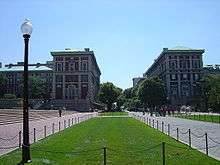
The majority of Columbia's graduate and undergraduate studies are conducted in Morningside Heights on Seth Low's late-19th century vision of a university campus where all disciplines could be taught at one location. The campus was designed along Beaux-Arts planning principles by the architects McKim, Mead & White. Columbia's main campus occupies more than six city blocks, or 32 acres (13 ha), in Morningside Heights, New York City, a neighborhood that contains a number of academic institutions. The university owns over 7,800 apartments in Morningside Heights, housing faculty, graduate students, and staff. Almost two dozen undergraduate dormitories (purpose-built or converted) are located on campus or in Morningside Heights. Columbia University has an extensive tunnel system more than a century old, with the oldest portions predating the present campus. Some of these remain accessible to the public, while others have been cordoned off.[57][58]
The Nicholas Murray Butler Library, known simply as Butler Library, is the largest single library in the Columbia University Library System, and is one of the largest buildings on the campus. Proposed as "South Hall" by the university's former president Nicholas Murray Butler as expansion plans for Low Memorial Library stalled, the new library was funded by Edward Harkness, benefactor of Yale's residential college system, and designed by his favorite architect, James Gamble Rogers. It was completed in 1934 and renamed for Butler in 1946. The library design is neo-classical in style. Its facade features a row of columns in the Ionic order above which are inscribed the names of great writers, philosophers, and thinkers, most of whom are read by students engaged in the Core Curriculum of Columbia College.[59] As of 2012, Columbia's library system includes over 11.9 million volumes, making it the eighth largest library system and fifth largest collegiate library system in the United States.[60][61]
Several buildings on the Morningside Heights campus are listed on the National Register of Historic Places. Low Memorial Library, a National Historic Landmark and the centerpiece of the campus, is listed for its architectural significance. Philosophy Hall is listed as the site of the invention of FM radio. Also listed is Pupin Hall, another National Historic Landmark, which houses the physics and astronomy departments. Here the first experiments on the fission of uranium were conducted by Enrico Fermi. The uranium atom was split there ten days after the world's first atom-splitting in Copenhagen, Denmark.[62][63][64]
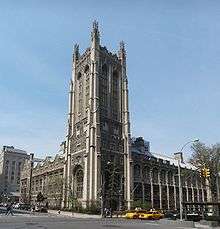
A statue by sculptor Daniel Chester French called Alma Mater is centered on the front steps of Low Memorial Library. McKim, Mead & White invited French to build the sculpture in order to harmonize with the larger composition of the court and library in the center of the campus. Draped in an academic gown, the female figure of Alma Mater wears a crown of laurels and sits on a throne. The scroll-like arms of the throne end in lamps, representing sapientia and doctrina. A book signifying knowledge, balances on her lap, and an owl, the attribute of wisdom, is hidden in the folds of her gown. Her right hand holds a scepter composed of four sprays of wheat, terminating with a crown of King's College which refers to Columbia's origin as a royal charter institution in 1754. A local actress named Mary Lawton was said to have posed for parts of the sculpture. The statue was dedicated on September 23, 1903, as a gift of Mr. & Mrs. Robert Goelet, and was originally covered in golden leaf. During the Columbia University protests of 1968 a bomb damaged the sculpture, but it has since been repaired.[65] The small hidden owl on the sculpture is also the subject of many Columbia legends, the main legend being that the first student in the freshmen class to find the hidden owl on the statue will be valedictorian, and that any subsequent Columbia male who finds it will marry a Barnard student, given that Barnard is a women's college.[66][67]
"The Steps", alternatively known as "Low Steps" or the "Urban Beach", are a popular meeting area for Columbia students. The term refers to the long series of granite steps leading from the lower part of campus (South Field) to its upper terrace. With a design inspired by the City Beautiful movement, the steps of Low Library provides Columbia University and Barnard College students, faculty, and staff with a comfortable outdoor platform and space for informal gatherings, events, and ceremonies. McKim's classical facade epitomizes late 19th-century new-classical designs, with its columns and portico marking the entrance to an important structure.[68] On warm days when the weather is favorable, the Low Steps often become a popular gathering place for students to sunbathe, eat lunch, or play frisbee.[69]
Other campuses
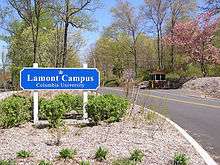
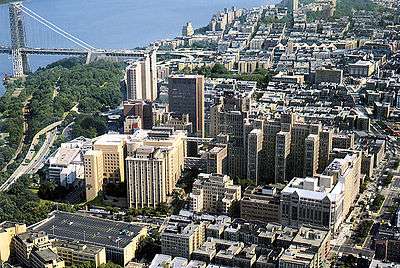
In April 2007, the university purchased more than two-thirds of a 17 acres (6.9 ha) site for a new campus in Manhattanville, an industrial neighborhood to the north of the Morningside Heights campus. Stretching from 125th Street to 133rd Street, Columbia Manhattanville houses buildings for Columbia's Business School, School of International and Public Affairs, Columbia School of the Arts, and the Jerome L. Greene Center for Mind, Brain, and Behavior, where research will occur on neurodegenerative diseases such as Parkinson's and Alzheimer's.[70][71] The $7 billion expansion plan included demolishing all buildings, except three that are historically significant, eliminating the existing light industry and storage warehouses, and relocating tenants in 132 apartments. Replacing these buildings created 6.8 million square feet (630,000 m2) of space for the university. Community activist groups in West Harlem fought the expansion for reasons ranging from property protection and fair exchange for land, to residents' rights.[72][73] Subsequent public hearings drew neighborhood opposition. As of December 2008, the State of New York's Empire State Development Corporation approved use of eminent domain, which, through declaration of Manhattanville's "blighted" status, gives governmental bodies the right to appropriate private property for public use.[74] On May 20, 2009, the New York State Public Authorities Control Board approved the Manhanttanville expansion plan and the first buildings are under construction. Columbia Transportation is the shuttle bus service of the university, it operates between all campuses.[75]
NewYork-Presbyterian Hospital is affiliated with the medical schools of both Columbia University and Cornell University. According to U.S. News & World Report's "2019-20 Best Hospitals Honor Roll and Medical Specialties Rankings", it is ranked fifth overall and third among university hospitals. Columbia's medical school has a strategic partnership with New York State Psychiatric Institute, and is affiliated with 19 other hospitals in the U.S. and four hospitals overseas. Health-related schools are located at the Columbia University Medical Center, a 20 acres (8.1 ha) campus located in the neighborhood of Washington Heights, fifty blocks uptown. Other teaching hospitals affiliated with Columbia through the NewYork-Presbyterian network include the Payne Whitney Clinic in Manhattan, and the Payne Whitney Westchester, a psychiatric institute located in White Plains, New York.[76] On the northern tip of Manhattan island (in the neighborhood of Inwood), Columbia owns 26-acre (11 ha) Baker Field, which includes the Lawrence A. Wien Stadium as well as facilities for field sports, outdoor track, and tennis. There is a third campus on the west bank of the Hudson River, the 157-acre (64 ha) Lamont-Doherty Earth Observatory and Earth Institute in Palisades, New York. A fourth is the 60-acre (24 ha) Nevis Laboratories in Irvington, New York for the study of particle and motion physics. A satellite site in Paris, France holds classes at Reid Hall.[10]
Sustainability
In 2006, the university established the Office of Environmental Stewardship to initiate, coordinate and implement programs to reduce the university's environmental footprint. The U.S. Green Building Council selected the university's Manhattanville plan for the Leadership in Energy and Environmental Design (LEED) Neighborhood Design pilot program. The plan commits to incorporating smart growth, new urbanism and "green" building design principles.[77] Columbia is one of the 2030 Challenge Partners, a group of nine universities in the city of New York that have pledged to reduce their greenhouse emissions by 30% within the next ten years. Columbia University adopts LEED standards for all new construction and major renovations. The university requires a minimum of Silver, but through its design and review process seeks to achieve higher levels. This is especially challenging for lab and research buildings with their intensive energy use; however, the university also uses lab design guidelines that seek to maximize energy efficiency while protecting the safety of researchers.[78]
Every Thursday and Sunday of the month, Columbia hosts a greenmarket where local farmers can sell their produce to residents of the city. In addition, from April to November Hodgson's farm, a local New York gardening center, joins the market bringing a large selection of plants and blooming flowers. The market is one of the many operated at different points throughout the city by the non-profit group GrowNYC.[79] Dining services at Columbia spends 36 percent of its food budget on local products, in addition to serving sustainably harvested seafood and fair trade coffee on campus.[80] Columbia has been rated "B+" by the 2011 College Sustainability Report Card for its environmental and sustainability initiatives.[81]
According to the A. W. Kuchler U.S. potential natural vegetation types, Columbia University would have a dominant vegetation type of Appalachian Oak (104) with a dominant vegetation form of Eastern Hardwood Forest (25).[82]
Academics
Undergraduate admissions and financial aid
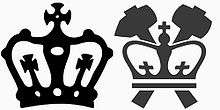
Columbia University received nearly 40,100 applications for the class of 2024 (entering 2020) and a total of around 2,450 were admitted to the two schools for an overall acceptance rate of 6.1%, making Columbia the third most selective college in the United States behind Stanford and Harvard as well as the second most selective college in the Ivy League.[83][84] According to the 2012 college selectivity ranking by U.S. News & World Report, which factors admission and yield rates among other criteria, Columbia was tied with Yale, Caltech and MIT as the most selective colleges in the country.[85] Columbia is a racially diverse school, with approximately 52% of all students identifying themselves as persons of color. Additionally, 50% of all undergraduates received grants from Columbia. The average grant size awarded to these students is $46,516.[86] In 2015–2016, annual undergraduate tuition at Columbia was $50,526 with a total cost of attendance of $65,860 (including room and board).[87]
On April 11, 2007, Columbia University announced a $400 million to $600 million donation from media billionaire alumnus John Kluge to be used exclusively for undergraduate financial aid. The donation is among the largest single gifts to higher education. Its exact value will depend on the eventual value of Kluge's estate at the time of his death; however, the generous donation has helped change financial aid policy at Columbia.[88] Annual gifts, fund-raising, and an increase in spending from the university's endowment have allowed Columbia to extend generous financial aid packages to qualifying students. As of 2008, undergraduates from families with incomes as high as $60,000 a year will have the projected cost of attending the university, including room, board, and academic fees, fully paid for by the university. That same year, the university ended loans for incoming and then-current students who were on financial aid, replacing loans that were traditionally part of aid packages with grants from the university. However, this does not apply to international students, transfer students, visiting students, or students in the School of General Studies.[89] In the fall of 2010, admission to Columbia's undergraduate colleges Columbia College and the Fu Foundation School of Engineering and Applied Science (also known as SEAS or Columbia Engineering) began accepting the Common Application. The policy change made Columbia one of the last major academic institutions and the last Ivy League university to switch to the Common Application.[90]
Scholarships are also given to undergraduate students by the admissions committee. Designations include John W. Kluge Scholars, John Jay Scholars, C. Prescott Davis Scholars, Global Scholars, Egleston Scholars, and Science Research Fellows. Named scholars are selected by the admission committee from first-year applicants. According to Columbia, the first four designated scholars "distinguish themselves for their remarkable academic and personal achievements, dynamism, intellectual curiosity, the originality and independence of their thinking, and the diversity that stems from their different cultures and their varied educational experiences."[91]
In 1919, Columbia established a student application process characterized by The New York Times as "the first modern college application." The application required a photograph of the applicant, the maiden name of the applicant's mother, and the applicant's religious background.[92]
Columbia University received $1 million in Hanban funds over five years to begin a Confucius Institute. Professor Robert Barnett, the director of the Modern Tibetan Studies Program, described a "strange silence about Tibet and other sensitive issues when it comes to Columbia, academics, and talks of China."[93]
Organization
| Columbia Graduate/Professional Schools[94] | |
|---|---|
| College/school | Year founded |
| College of Physicians and Surgeons | 1767 |
| College of Dental Medicine | 1852 |
| Columbia Law School | 1858 |
| Fu Foundation School of Engineering and Applied Science | 1864 |
| Graduate School of Arts and Sciences | 1880 |
| Graduate School of Architecture, Planning and Preservation | 1881 |
| Teachers College, Columbia University (affiliate) | 1887 |
| Columbia University School of Nursing | 1892 |
| Columbia University School of Social Work | 1898 |
| Graduate School of Journalism | 1912 |
| Columbia Business School | 1916 |
| Mailman School of Public Health | 1922 |
| School of International and Public Affairs | 1946 |
| School of the Arts | 1965 |
| School of Professional Studies | 1995 |
| Columbia Undergraduate Schools[95] | |
|---|---|
| College/school | Year founded |
| Columbia College, Columbia University | 1754 |
| Fu Foundation School of Engineering and Applied Science | 1864 |
| Barnard College, Columbia University (affiliate) | 1889 |
| Columbia University School of General Studies | 1947 |
Columbia University is an independent, privately supported, nonsectarian institution of higher education. Its official corporate name is "The Trustees of Columbia University in the City of New York." The university's first charter was granted in 1754 by King George II; however, its modern charter was first enacted in 1787 and last amended in 1810 by the New York State Legislature. The university is governed by 24 trustees, customarily including the president, who serves ex officio. The trustees themselves are responsible for choosing their successors. Six of the 24 are nominated from a pool of candidates recommended by the Columbia Alumni Association. Another six are nominated by the board in consultation with the executive committee of the University Senate. The remaining 12, including the president, are nominated by the trustees themselves through their internal processes. The term of office for trustees is six years. Generally, they serve for no more than two consecutive terms. The trustees appoint the president and other senior administrative officers of the university, and review and confirm faculty appointments as required. They determine the university's financial and investment policies, authorize the budget, supervise the endowment, direct the management of the university's real estate and other assets, and otherwise oversee the administration and management of the university.[96]
The University Senate was established by the trustees after a university-wide referendum in 1969. It succeeded to the powers of the University Council, which was created in 1890 as a body of faculty, deans, and other administrators to regulate inter-Faculty affairs and consider issues of university-wide concern. The University Senate is a unicameral body consisting of 107 members drawn from all constituencies of the university. These include the president of the university, the provost, the deans of Columbia College and the Graduate School of Arts and Sciences, all who serve ex officio, and five additional representatives, appointed by the president, from the university's administration. The president serves as the Senate's presiding officer. The Senate is charged with reviewing the educational policies, physical development, budget, and external relations of the university. It oversees the welfare and academic freedom of the faculty and the welfare of students.[97][98][99]
The president of Columbia University, who is selected by the trustees in consultation with the executive committee of the University Senate and who serves at the trustees' pleasure, is the chief executive officer of the university. Assisting the president in administering the university are the provost, the senior executive vice president, the executive vice president for health and biomedical sciences, several other vice presidents, the general counsel, the secretary of the university, and the deans of the faculties, all of whom are appointed by the trustees on the nomination of the president and serve at their pleasure.[96] Lee C. Bollinger became the 19th president of Columbia University on June 1, 2002. A prominent advocate of affirmative action, he played a leading role in the twin Supreme Court cases—Grutter v Bollinger and Gratz v Bollinger—that upheld and clarified the importance of diversity as a compelling justification for affirmative action in higher education. A leading First Amendment scholar, he is widely published on freedom of speech and press, and serves on the faculty of Columbia Law School.[100]
Columbia has three official undergraduate colleges: Columbia College (CC), the liberal arts college offering the Bachelor of Arts degree; the Fu Foundation School of Engineering and Applied Science (also known as SEAS or Columbia Engineering), the engineering and applied science school offering the Bachelor of Science degree; and The School of General Studies (GS), the liberal arts college offering the Bachelor of Arts degree to non-traditional students undertaking full- or part-time study.[101] Barnard College is a women's liberal arts college and an academic affiliate in which students receive a Bachelor of Arts degree equivalent to students at Columbia. Their degrees are signed by the Presidents of Columbia University and Barnard College.[102][103] Barnard students are also eligible to cross-register classes that are available through the Barnard Catalogue and alumnae can join the Columbia Alumni Association.[104]
Joint degree programs are available through Union Theological Seminary, the Jewish Theological Seminary of America,[105] as well as through the Juilliard School.[106][107] Teachers College and Barnard College are faculties of the university; both colleges' presidents are deans under the university governance structure.[108] The Columbia University Senate includes faculty and student representatives from Teachers College and Barnard College who serve two-year terms; all senators are accorded full voting privileges regarding matters impacting the entire university. Teachers College is an affiliated, financially independent graduate school with their own Board of Trustees.[98][99] Pursuant to an affiliation agreement, Columbia is given the authority to confer "appropriate degrees and diplomas" to the graduates of Teachers College. The degrees are signed by Presidents of Teachers College and Columbia University. [109][110][108] Columbia's General Studies school also has joint undergraduate programs available through University College London,[111] Sciences Po,[112] City University of Hong Kong,[113] Trinity College Dublin,[114] and the Juilliard School.[115]
The university also has several Columbia Global Centers, in Amman, Beijing, Istanbul, Paris, Mumbai, Rio de Janeiro, Santiago, Asunción and Nairobi.[116] According to The Nation, some American universities "restrict discussions of Chinese human-rights abuses for fear of losing access to the country. Columbia University, for instance, canceled several talks on topics sensitive to the Communist Party because it was worried about offending Beijing."[117]
International partnerships
Columbia students can study abroad for a semester or a year at partner institutions such as Sciences Po, École des hautes études en sciences sociales (EHESS), École normale supérieure (ENS),[118] Panthéon-Sorbonne University, King's College London, London School of Economics, and the University of Warwick.
Rankings
|
|
| ||||||||||||||||||||||||||||||||||||||||||||||||||||||||||||||||||||||||||||||||||||||||||||||||||||||||||||||||||||||||||||||||||||||||||||||||
Columbia University is ranked 3rd overall among U.S. national universities and 7th globally for 2020 by U.S. News & World Report.[130] QS University Rankings listed Columbia as 5th in the United States.[131] Ranked 15th among U.S. colleges for 2020 by Wall Street Journal and Times Higher Education, in recent years it has been ranked as high as 2nd.[132] Individual colleges and schools were also nationally ranked by U.S. News & World Report for its 2021 edition. Columbia Law School was ranked for 4th, the Mailman School of Public Health 4th, the School of Social Work tied for 3rd, Columbia Business School 8th, the College of Physicians and Surgeons tied for 6th for research (and tied for 31st for primary care), the School of Nursing tied for 11th in the master's program and tied for 1st in the doctorate nursing program, and the Fu Foundation School of Engineering and Applied Science (graduate) was ranked tied for 14th.[128]
In 2019, Columbia was ranked 8th in the world by Academic Ranking of World Universities, 7th in the world by U.S. News & World Report 18th in the world by QS World University Rankings, and 16th globally by Times Higher Education World University Rankings.
Rankings by other organizations include the Graduate School of Architecture, Planning and Preservation #2,[133] and its Graduate School of Journalism #1.[134][135]
Between 1996 and 2008, 18 Columbia affiliates have won Nobel Prizes, of whom nine are faculty members while one is an adjunct senior research scientist (Daniel Tsui) and the other a Global Fellow (Kofi Annan).[136] Columbia faculty awarded the Nobel Prize include Richard Axel, Martin Chalfie, Eric Kandel, Tsung-Dao Lee, Robert Mundell, Orhan Pamuk, Edmund S. Phelps, Joseph Stiglitz, and Horst L. Stormer.[137] Other awards and honors won by faculty include 30 MacArthur Foundation Award winners,[138] 4 National Medal of Science recipients,[138] 43 National Academy of Sciences Award winners,[138] 20 National Academy of Engineering Award winners,[139] 38 Institute of Medicine of the National Academies Award recipients[140] and 143 American Academy of Arts and Sciences Award winners.[138]
In 2015, Columbia University was ranked the first in the state by average professor salaries.[141] In 2011, the Mines ParisTech : Professional Ranking World Universities ranked Columbia 3rd best university for forming CEOs in the US and 12th worldwide.
Research
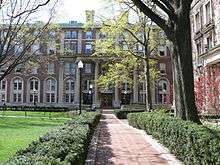
Columbia is classified among "R1: Doctoral Universities – Very high research activity".[142] Columbia was the first North American site where the uranium atom was split. The College of Physicians and Surgeons played a central role in developing the modern understanding of neuroscience with the publication of Principles of Neural Science, described by historian of science Katja Huenther as the "neuroscience 'bible'".[143] The book was written by a team of Columbia researchers that included Nobel Prize winner Eric Kandel, James H. Schwartz, and Thomas Jessell. Columbia was the birthplace of FM radio and the laser.[144] The first brain-computer interface capable of translating brain signals into speech was developed by neuroengineers at Columbia. The MPEG-2 algorithm of transmitting high quality audio and video over limited bandwidth was developed by Dimitris Anastassiou, a Columbia professor of electrical engineering. Biologist Martin Chalfie was the first to introduce the use of Green Fluorescent Protein (GFP) in labeling cells in intact organisms.[145] Other inventions and products related to Columbia include Sequential Lateral Solidification (SLS) technology for making LCDs, System Management Arts (SMARTS), Session Initiation Protocol (SIP) (which is used for audio, video, chat, instant messaging and whiteboarding), pharmacopeia, Macromodel (software for computational chemistry), a new and better recipe for glass concrete, Blue LEDs, and Beamprop (used in photonics).[146] Columbia scientists have been credited with about 175 new inventions in the health sciences each year.[146] More than 30 pharmaceutical products based on discoveries and inventions made at Columbia reached the market. These include Remicade (for arthritis), Reopro (for blood clot complications), Xalatan (for glaucoma), Benefix, Latanoprost (a glaucoma treatment), shoulder prosthesis, homocysteine (testing for cardiovascular disease), and Zolinza (for cancer therapy).[147] Columbia Technology Ventures (formerly Science and Technology Ventures), as of 2008, manages some 600 patents and more than 250 active license agreements.[147] Patent-related deals earned Columbia more than $230 million in the 2006 fiscal year, according to the university, more than any university in the world.[148] Columbia owns many unique research facilities, such as the Columbia Institute for Tele-Information dedicated to telecommunications and the Goddard Institute for Space Studies, which is an astronomical observatory affiliated with NASA.
Military and veteran enrollment
Columbia is a long-standing participant of the United States Department of Veterans Affairs Yellow Ribbon Program, allowing eligible veterans to pursue a Columbia undergraduate degree regardless of socioeconomic status for over 70 years.[149] As a part of the Eisenhower Leader Development Program (ELDP) in partnership with the U.S. Military Academy at West Point, Columbia is the only school in the Ivy League to offer a graduate degree program in organizational psychology to aid military officers in tactical decision making and strategic management.[150]
Student life
Students
| Undergraduate | Postgraduate | |
|---|---|---|
| Asian/Pacific Islander | 17.1% | 10.9% |
| Black | 7.2% | 4.1% |
| Hispanic | 12.8% | 5.7% |
| American Indian/Alaskan Native | 0.5% | 0.1% |
| Two or more races | 4.7% | 1.7% |
| White | 38.1% | 32.6% |
| Non-residents | 13.4% | 34.3% |
| Unknown | 6.2% | 10.5% |
.jpg)
In 2017, Columbia University's student population was 32,429 (8,868 students in undergraduate programs and 23,561 in postgraduate programs), with 42% of the student population identifying themselves as a minority and 28% born outside of the United States.[153][154] Twenty-six percent of students at Columbia have family incomes below $60,000, making it one of the most socioeconomically diverse top-tier colleges. Sixteen percent of students at Columbia receive Federal Pell Grants,[155] which mostly go to students whose family incomes are below $40,000. Seventeen percent of students are the first member of their family to attend a four-year college.[156]
On-campus housing is guaranteed for all four years as an undergraduate. Columbia College and the Fu Foundation School of Engineering and Applied Science (also known as SEAS or Columbia Engineering) share housing in the on-campus residence halls. First-year students usually live in one of the large residence halls situated around South Lawn: Hartley Hall, Wallach Hall (originally Livingston Hall), John Jay Hall, Furnald Hall or Carman Hall. Upperclassmen participate in a room selection process, wherein students can pick to live in a mix of either corridor- or apartment-style housing with their friends. The Columbia University School of General Studies, Barnard College and graduate schools have their own apartment-style housing in the surrounding neighborhood.[157]
Columbia University is home to many fraternities, sororities, and co-educational Greek organizations. Approximately 10–15% of undergraduate students are associated with Greek life.[158] Many Barnard women also join Columbia sororities. There has been a Greek presence on campus since the establishment in 1836 of the Delta chapter of Alpha Delta Phi.[159] The InterGreek Council is the self-governing student organization that provides guidelines and support to its member organizations within each of the three councils at Columbia, the Interfraternity Council, Panhellenic Council, and Multicultural Greek Council. The three council presidents bring their affiliated chapters together once a month to meet as one Greek community. The InterGreek Council meetings provide opportunity for member organizations to learn from each other, work together and advocate for community needs.[160]
Publications
.jpg)
The Columbia Daily Spectator is the nation's second-oldest student newspaper;[161] and The Blue and White,[162] a monthly literary magazine established in 1890, discusses campus life and local politics in print and on its daily blog, dubbed the Bwog. The Morningside Post is a student-run multimedia news publication. Its content: student-written investigative news, international affairs analysis, opinion, and satire.
Political publications include The Current,[163] a journal of politics, culture and Jewish Affairs; the Columbia Political Review,[164] the multi-partisan political magazine of the Columbia Political Union; and AdHoc,[165] which denotes itself as the "progressive" campus magazine and deals largely with local political issues and arts events.
Columbia Magazine is the alumni magazine of Columbia, serving all 340,000+ of the university's alumni. Arts and literary publications include The Columbia Review,[166] the nation's oldest college literary magazine; Columbia, a nationally regarded literary journal; the Columbia Journal of Literary Criticism;[167] and The Mobius Strip,[168] an online arts and literary magazine. Inside New York[169] is an annual guidebook to New York City, written, edited, and published by Columbia undergraduates. Through a distribution agreement with Columbia University Press, the book is sold at major retailers and independent bookstores.

Columbia is home to numerous undergraduate academic publications. The Journal of Politics & Society,[170] is a journal of undergraduate research in the social sciences, published and distributed nationally by the Helvidius Group; Publius is an undergraduate journal of politics established in 2008 and published biannually;[171] the Columbia East Asia Review allows undergraduates throughout the world to publish original work on China, Japan, Korea, Tibet, and Vietnam and is supported by the Weatherhead East Asian Institute;[172] and The Birch,[173] is an undergraduate journal of Eastern European and Eurasian culture that is the first national student-run journal of its kind; the Columbia Political Review, the undergraduate magazine on politics operated by the Columbia Political Union; the Columbia Economics Review, the undergraduate economic journal on research and policy supported by the Columbia Economics Department; and the Columbia Science Review is a science magazine that prints general interest articles, faculty profiles, and student research papers.[174]
The Fed[175] a triweekly satire and investigative newspaper, and the Jester of Columbia,[176] the newly (and frequently) revived campus humor magazine both inject humor into local life. Other publications include The Columbian, the undergraduate colleges' annually published yearbook[177] the Gadfly, a biannual journal of popular philosophy produced by undergraduates;[178] and Rhapsody in Blue, an undergraduate urban studies magazine.[179] Professional journals published by academic departments at Columbia University include Current Musicology[180] and The Journal of Philosophy.[181] During the spring semester, graduate students in the Journalism School publish The Bronx Beat, a bi-weekly newspaper covering the South Bronx.
Founded in 1961 under the auspices of Columbia University's Graduate School of Journalism, the Columbia Journalism Review (CJR) examines day-to-day press performance as well as the forces that affect that performance. The magazine is published six times a year, and offers a reporting, analysis, criticism, and commentary. CJR.org, its web site, delivers real-time criticism and reporting, giving CJR a presence in the ongoing conversation about the media.[182]
Broadcasting

Columbia is home to two pioneers in undergraduate campus radio broadcasting, WKCR-FM and CTV. Many undergraduates are also involved with Barnard's radio station, WBAR. WKCR, the student run radio station that broadcasts to the Tri-State area, claims to be the oldest FM radio station in the world, owing to the university's affiliation with Major Edwin Armstrong. The station went operational on July 18, 1939, from a 400-foot antenna tower in Alpine, New Jersey, broadcasting the very first FM transmission in the world. Initially, WKCR wasn't a radio station, but an organization concerned with the technology of radio communications. As membership grew, however, the nascent club turned its efforts to broadcasting. Armstrong helped the students in their early efforts, donating a microphone and turntables when they designed their first makeshift studio in a dorm room.[183] The station has its studios on the second floor of Alfred Lerner Hall on the Morningside campus with its main transmitter tower at 4 Times Square in Midtown Manhattan. Columbia Television (CTV) is the nation's second oldest Student television station and home of CTV News, a weekly live news program produced by undergraduate students.[184][185]
Debate and Model UN
The Philolexian Society is a literary and debating club founded in 1802, making it the oldest student group at Columbia, as well as the third oldest collegiate literary society in the country.[186] The society annually administers the Joyce Kilmer Bad Poetry Contest.[187] The Columbia Parliamentary Debate Team competes in tournaments around the country as part of the American Parliamentary Debate Association, and hosts both high school and college tournaments on Columbia's campus, as well as public debates on issues affecting the university.[188]
The Columbia International Relations Council and Association (CIRCA), oversees Columbia's Model United Nations activities. CIRCA hosts college and high school Model UN conferences, hosts speakers influential in international politics to speak on campus, trains students from underprivileged schools in New York in Model UN and oversees a competitive team, which travels to colleges around the country and to an international conference every year.[189] The competitive team consistently wins best and outstanding delegation awards and is considered one of the top teams in the country.[190]
Technology and entrepreneurship
.jpg)
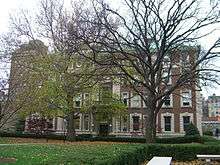
The Columbia University Organization of Rising Entrepreneurs (CORE) was founded in 1999. The student-run group aims to foster entrepreneurship on campus. Each year CORE hosts dozens of events, including talks, #StartupColumbia, a conference and venture competition for $250,000, and Ignite@CU, a weekend for undergrads interested in design, engineering, and entrepreneurship. Notable speakers include Peter Thiel, Jack Dorsey,[191] Alexis Ohanian, Drew Houston, and Mark Cuban. By 2006, CORE had awarded graduate and undergraduate students over $100,000 in seed capital.
CampusNetwork, an on-campus social networking site called Campus Network that preceded Facebook, was created and popularized by Columbia engineering student Adam Goldberg in 2003. Mark Zuckerberg later asked Goldberg to join him in Palo Alto to work on Facebook, but Goldberg declined the offer.[192] The Fu Foundation School of Engineering and Applied Science offers a minor in Technical Entrepreneurship through its Center for Technology, Innovation, and Community Engagement. SEAS' entrepreneurship activities focus on community building initiatives in New York and worldwide, made possible through partners such as Microsoft Corporation.[193]
Columbia is a top supplier of young engineering entrepreneurs for New York City. Over the past 20 years, graduates of Columbia established over 100 technology companies.[194] Mayor Bloomberg has provided over $6.7 million towards entrepreneurial programs that partner with Columbia and other universities in New York. Professor Chris Wiggins of the Fu Foundation School of Engineering and Applied Science is working in conjunction with Professors Evan Korth of New York University and Hilary Mason, chief scientist at bit.ly to facilitate the growth of student tech-startups in an effort to transform a traditionally financially centered New York City into the next Silicon Valley. Their website, hackny.org, is a gathering ground of ideas and discussions for New York's young entrepreneurial community, the Silicon Alley.[195]
On June 14, 2010, Mayor Michael R. Bloomberg launched the NYC Media Lab to promote innovations in New York's media industry.[196] Situated at the New York University Tandon School of Engineering, the lab is a consortium of Columbia University, New York University, and New York City Economic Development Corporation acting to connect companies with universities in new technology research. The Lab is modeled after similar ones at MIT and Stanford. A $250,000 grant from the New York City Economic Development Corporation was used to establish the NYC Media Lab. Each year, the lab will host a range of roundtable discussions between the private sector and academic institutions. It will support research projects on topics of content format, next-generation search technologies, computer animation for film and gaming, emerging marketing techniques, and new devices development. The lab will also create a media research and development database. Columbia University will coordinate the long-term direction of the media lab as well as the involvement of its faculty and those of other universities.[196]
Athletics
A member institution of the National Collegiate Athletic Association (NCAA) in Division I FCS, Columbia fields varsity teams in 29 sports and is a member of the Ivy League. The football Lions play home games at the 17,000-seat Robert K. Kraft Field at Lawrence A. Wien Stadium. The Baker Athletics Complex also includes facilities for baseball, softball, soccer, lacrosse, field hockey, tennis, track, and rowing, as well as the new Campbell Sports Center, opened in January 2013. The basketball, fencing, swimming & diving, volleyball, and wrestling programs are based at the Dodge Physical Fitness Center on the main campus.[197]
Former students include Baseball Hall of Famers Lou Gehrig and Eddie Collins, football Hall of Famer Sid Luckman, Marcellus Wiley, and world champion women's weightlifter Karyn Marshall.[198][199] On May 17, 1939, fledgling NBC broadcast a doubleheader between the Columbia Lions and the Princeton Tigers at Columbia's Baker Field, making it the first televised regular athletic event in history.[200][201]
Columbia University athletics has a long history, with many accomplishments in athletic fields. In 1870, Columbia played against Rutgers University in the second football game in the history of the sport. Eight years later, Columbia crew won the famed Henley Royal Regatta in the first-ever defeat for an English crew rowing in English waters. In 1900, Olympian and Columbia College student Maxie Long set the first official world record in the 400 meters with a time of 47.8 seconds. In 1983, Columbia men's soccer went 18–0 and was ranked first in the nation, but lost to Indiana 1–0 in double overtime in the NCAA championship game; nevertheless, the team went further toward the NCAA title than any Ivy League soccer team in history.[202] The football program unfortunately is best known for its record of futility set during the 1980s: between 1983 and 1988, the team lost 44 games in a row, which is still the record for the NCAA Football Championship Subdivision. The streak was broken on October 8, 1988, with a 16–13 victory over archrival Princeton University. That was the Lions' first victory at Wien Stadium, which had been opened during the losing streak and was already four years old.[203] A new tradition has developed with the Liberty Cup. The Liberty Cup is awarded annually to the winner of the football game between Fordham and Columbia Universities, two of the only three NCAA Division I football teams in New York City. The tradition began in 2002, a year after the Fordham-Columbia game was postponed due to the September 11 attacks.
World Leaders Forum
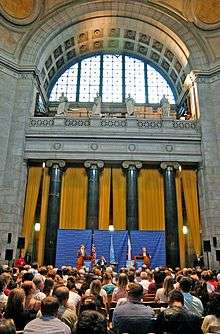
Established in 2003 by university president Lee C. Bollinger, the World Leaders Forum at Columbia University provides the opportunity for undergraduate and graduate students alike to listen to world leaders in government, religion, industry, finance, and academia. The World Leaders Forum is a year-around event series that strives to provide a platform for uninhibited speech among nations and cultures, while educating students about problems and progress around the globe.[204]
All Columbia undergraduates and graduates, as well as students of Barnard College and other Columbia affiliated schools, can register to participate in the World Leaders Forum using their student IDs. Even for individuals who do not have the privilege to attend the event live, they can watch the forum via online videos on Columbia University's website.[205]
Past forum speakers include former president of the United States Bill Clinton, the prime minister of India Atal Bihari Vajpayee, former president of Ghana John Agyekum Kufuor, president of Afghanistan Hamid Karzai, prime minister of Russia Vladimir Putin, president of the Republic of Mozambique Joaquim Alberto Chissano, president of the Republic of Bolivia Carlos Diego Mesa Gisbert, president of the Republic of Romania Ion Iliescu, president of the Republic of Latvia Vaira Vīķe-Freiberga, the first female president of Finland Tarja Halonen, President Yudhoyono of Indonesia, President Pervez Musharraf of the Islamic Republic of Pakistan, Iraq President Jalal Talabani, the 14th Dalai Lama, president of the Islamic Republic of Iran Mahmoud Ahmadinejad, financier George Soros, Mayor of New York City Michael R. Bloomberg, President Václav Klaus of the Czech Republic, President Cristina Fernández de Kirchner of Argentina, former Secretary-General of the United Nations Kofi Annan, and Al Gore.[206]
Other
The Columbia University Orchestra was founded by composer Edward MacDowell in 1896, and is the oldest continually operating university orchestra in the United States. Undergraduate student composers at Columbia may choose to become involved with Columbia New Music, which sponsors concerts of music written by undergraduate students from all of Columbia's schools.[207]
There are a number of performing arts groups at Columbia dedicated to producing student theater, including the Columbia Players, King's Crown Shakespeare Troupe (KCST), Columbia Musical Theater Society (CMTS), NOMADS (New and Original Material Authored and Directed by Students), LateNite Theatre, Columbia University Performing Arts League (CUPAL), Black Theatre Ensemble (BTE), sketch comedy group Chowdah, and improvisational troupes Alfred and Fruit Paunch.[208] The Columbia University Marching Band tells jokes during the campus tradition of Orgo Night.[209]
.jpg)
The Columbia Queer Alliance is the central Columbia student organization that represents the bisexual, lesbian, gay, transgender, and questioning student population. It is the oldest gay student organization in the world, founded as the Student Homophile League in 1967 by students including lifelong activist Stephen Donaldson.[210][211] Columbia University campus military groups include the U.S. Military Veterans of Columbia University and Advocates for Columbia ROTC. In the 2005–06 academic year, the Columbia Military Society, Columbia's student group for ROTC cadets and Marine officer candidates, was renamed the Hamilton Society for "students who aspire to serve their nation through the military in the tradition of Alexander Hamilton".[212]
The university also houses an independent nonprofit organization, Community Impact, which strives to serve disadvantaged people in the Harlem, Washington Heights, and Morningside Heights communities. From its earliest inception as a single service initiative formed in 1981 by Columbia University undergraduates, Community Impact has grown into Columbia University's largest student service organization. CI provides food, clothing, shelter, education, job training, and companionship for residents in its surrounding communities. CI consists of a dedicated corps of about 950 Columbia University student volunteers participating in 25 community service programs, which serve more than 8,000 people each year.[213]
Student activism
1936 Protest against Nazis
In 1936, Robert Burke, CC '38 led a rally outside President Butler's mansion to protest Columbia's friendly relationship with the Nazis.[214] Burke was expelled, and was never readmitted. The university has never apologized for expelling him.[215]
Protests of 1968
Students initiated a major demonstration in 1968 over two main issues. The first was Columbia's proposed gymnasium in neighboring Morningside Park; this was seen by the protesters to be an act of aggression aimed at the black residents of neighboring Harlem. A second issue was the Columbia administration's failure to resign its institutional membership in the Pentagon's weapons research think-tank, the Institute for Defense Analyses (IDA). Students barricaded themselves inside Low Library, Hamilton Hall, and several other university buildings during the protests, and New York City police were called onto the campus to arrest or forcibly remove the students.[216][217]
The protests achieved two of their stated goals. Columbia disaffiliated from the IDA and scrapped the plans for the controversial gym, building a subterranean physical fitness center under the north end of campus instead. A popular myth states that the gym's plans were eventually used by Princeton University for the expansion of its athletic facilities, but as Jadwin Gymnasium was already 50% complete by 1966 (when the Columbia gym was announced) this was clearly not correct.[218] At least 30 Columbia students were suspended by the administration as a result of the protests. Many of the Class of '68 walked out of their graduation and held a countercommencement on Low Plaza with a picnic following at Morningside Park, the place where the protests began.[219] The protests hurt Columbia financially as many potential students chose to attend other universities and some alumni refused to donate money to the school. Allan Bloom, a professor of philosophy at the University of Chicago, believed that the protest efforts at Columbia were responsible for pushing higher education further toward the liberal left. As a result of the protests, Bloom stated, "American universities were no longer places of intellectual and academic debate, but rather places of 'political correctness' and liberalism."[220]
Protests against racism and apartheid
Further student protests, including hunger strike and more barricades of Hamilton Hall and the Business School[221] during the late 1970s and early 1980s, were aimed at convincing the university trustees to divest all of the university's investments in companies that were seen as active or tacit supporters of the apartheid regime in South Africa. A notable upsurge in the protests occurred in 1978, when following a celebration of the tenth anniversary of the student uprising in 1968, students marched and rallied in protest of university investments in South Africa. The Committee Against Investment in South Africa (CAISA) and numerous student groups including the Socialist Action Committee, the Black Student Organization and the Gay Students group joined together and succeeded in pressing for the first partial divestment of a U.S. university.
The initial (and partial) Columbia divestment,[222] focused largely on bonds and financial institutions directly involved with the South African regime.[223] It followed a year-long campaign first initiated by students who had worked together to block the appointment of former United States Secretary of State Henry Kissinger to an endowed chair at the university in 1977.[224]
Broadly backed by student groups and many faculty members the Committee Against Investment in South Africa held teach-ins and demonstrations through the year focused on the trustees ties to the corporations doing business with South Africa. Trustee meetings were picketed and interrupted by demonstrations culminating in May 1978 in the takeover of the Graduate School of Business.[225][226]
Ahmadinejad speech controversy

The School of International and Public Affairs extends invitations to heads of state and heads of government who come to New York City for the opening of the fall session of the United Nations General Assembly. In 2007, Iranian President Mahmoud Ahmadinejad was one of those invited to speak on campus. Ahmadinejad accepted his invitation and spoke on September 24, 2007, as part of Columbia University's World Leaders Forum.[227] The invitation proved to be highly controversial. Hundreds of demonstrators swarmed the campus on September 24 and the speech itself was televised worldwide. University President Lee C. Bollinger tried to allay the controversy by letting Ahmadenijad speak, but with a negative introduction (given personally by Bollinger). This did not mollify those who were displeased with the fact that the Iranian leader had been invited onto the campus.[228] Columbia students, though, turned out en masse to listen to the speech on the South Lawn. An estimated 2,500 undergraduates and graduates came out for the historic occasion.
During his speech, Ahmadinejad criticized Israel's policies towards the Palestinians; called for research on the historical accuracy of the Holocaust; raised questions as to who initiated the 9/11 attacks; defended Iran's nuclear power program, criticizing the UN's policy of sanctions on his country; and attacked U.S. foreign policy in the Middle East. In response to a question about Iran's treatment of women and homosexuals, he asserted that women are respected in Iran and that "In Iran, we don't have homosexuals like in your country... In Iran, we do not have this phenomenon. I don't know who told you this."[229] The latter statement drew laughter from the audience. The Manhattan District Attorney's Office accused Columbia of accepting grant money from the Alavi Foundation to support faculty "sympathetic" to Iran's Islamic republic.[230]
ROTC controversy
Beginning in 1969, during the Vietnam War, the university did not allow the U.S. military to have Reserve Officers' Training Corps (ROTC) programs on campus,[231] though Columbia students could participate in ROTC programs at other local colleges and universities.[232][233][234][235] At a forum at the university during the 2008 presidential election campaign, both John McCain and Barack Obama said that the university should consider reinstating ROTC on campus.[234][236][237] After the debate, the president of the university, Lee C. Bollinger, stated that he did not favor reinstating Columbia's ROTC program, because of the military's anti-gay policies. In November 2008, Columbia's undergraduate student body held a referendum on the question of whether or not to invite ROTC back to campus, and the students who voted were almost evenly divided on the issue. ROTC lost the vote (which would not have been binding on the administration, and did not include graduate students, faculty, or alumni) by a fraction of a percentage point.
In April 2010 during Admiral Mike Mullen's address at Columbia, President Lee C. Bollinger stated that the ROTC would be readmitted to campus if the admiral's plans for revoking the don't ask, don't tell policy were successful. In February 2011 during one of three town-hall meetings on the ROTC ban, former Army staff sergeant Anthony Maschek, a Purple Heart recipient for injuries sustained during his service in Iraq, was booed and hissed at by some students during his speech promoting the idea of allowing the ROTC on campus.[238] In April 2011 the Columbia University Senate voted to welcome the ROTC program back on campus.[239] Secretary of the Navy Ray Mabus and Columbia University President Lee C. Bollinger signed an agreement to reinstate Naval Reserve Officers Training Corps (NROTC) program at Columbia for the first time in more than 40 years on May 26, 2011. The agreement was signed at a ceremony on board the USS Iwo Jima, docked in New York for the Navy's annual Fleet Week.[240]
Divestment from private prisons
In February 2014, after learning that the university had over $10 million invested in the private prison industry, a group of students delivered a letter President Bollinger's office requesting a meeting and officially launching the Columbia Prison Divest (CPD) campaign.[241] As of June 30, 2013, Columbia held investments in Corrections Corporation of America, the largest private prison company in the United States, as well as G4S, the largest multinational security firm in the world. Students demanded that the university divest these holdings from the industry and instate a ban on future investments in the private prison industry.[242] Aligning themselves with the growing Black Lives Matter movement and in conversation with the heightened attention on race and the system of mass incarceration, CPD student activists hosted events to raise awareness of the issue and worked to involve large numbers of members of the Columbia and West Harlem community in campaign activities.[242] After eighteen months of student driven organizing, the board of trustees of Columbia University voted to support the petition for divestment from private prison companies, which was confirmed to student leaders on June 22, 2015.[243] The Columbia Prison Divest campaign was the first campaign to successfully get a U.S. university to divest from the private prison industry.[243]
Traditions
Orgo Night
In one of the school's longest-lasting traditions, begun in 1975,[244] at midnight before the Organic Chemistry exam—often the first day of final exams—the Columbia University Marching Band invaded and briefly occupied the main undergraduate reading room in Butler Library to distract and entertain studying students with some forty-five minutes of raucous jokes and music, beginning and ending with the singing of the school's fight song, "Roar, Lion, Roar". After the main show before a crowd that routinely began filling the room well before the announced midnight start time, the Band led a procession to several campus locations, including the residential quadrangle of Barnard College for more music and temporary relief from the stress of last-minute studying.
In December 2016, following several years of complaints from students who said that some Orgo Night scripts and advertising posters were offensive to minority groups,[245] as well as a New York Times article on the Band's crass treatment of sexual assault on campus,[246] University administrators banned the Marching Band from performing its Orgo Night show in the traditional Butler Library location. Protests and allegations of censorship[247] followed, but University President Lee Bollinger said that complaints and publicity about the shows had "nothing to do with" the prohibition.[248] The Band instead performed—at midnight, as usual—outside the main entrance of Butler Library.
The Band's official alumni organization, the Columbia University Band Alumni Association, registered protests with the administration,[249] and an ad hoc group of alumni writing under the name "A. Hamiltonius" published a series of pamphlets addressing their dissatisfaction with the ban,[250] but at the end of the spring 2017 semester the university administration held firm,[251] prompting the Marching Band to again stage its show outside the building. For Orgo Night December 2017, Band members quietly infiltrated the library with their musical instruments during the evening and popped up at midnight to perform the show inside despite the ban.[252] Prior to the spring 2018 exam period, the administration warned the group's leaders against a repeat and restated the injunction, warning of sanctions; the Band again staged its Orgo Night show in front of the library.[253]
Tree-Lighting and Yule Log ceremonies
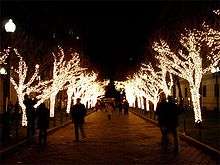
The campus Tree-Lighting Ceremony was inaugurated in 1998. It celebrates the illumination of the medium-sized trees lining College Walk in front of Kent and Hamilton Halls on the east end and Dodge and Journalism Halls on the west, just before finals week in early December. The lights remain on until February 28. Students meet at the sun-dial for free hot chocolate, performances by a cappella groups, and speeches by the university president and a guest.[254]
Immediately following the College Walk festivities is one of Columbia's older holiday traditions, the lighting of the Yule Log. The Christmas ceremony dates to a period prior to the American Revolutionary War, but lapsed before being revived by University President Nicholas Murray Butler in the early 20th century. A troop of students dressed as Continental Army soldiers carry the eponymous log from the sun-dial to the lounge of John Jay Hall, where it is lit amid the singing of seasonal carols. The Christmas ceremony is accompanied by a reading of A Visit From St. Nicholas by Clement Clarke Moore and Yes, Virginia, There is a Santa Claus by Francis Pharcellus Church.[255]
The Varsity Show
The Varsity Show is an annual musical written by and for students and was established in 1894, making it one of Columbia's oldest traditions. Past writers and directors have included Columbians Richard Rodgers and Oscar Hammerstein, Lorenz Hart, I.A.L. Diamond, Herman Wouk and Eric Garcetti. The show has one of the largest operating budgets of all university events.[256]
Notable people
The university has graduated many notable alumni, including five Founding Fathers of the United States, an author of the United States Constitution and a member of the Committee of Five;[n 1] As of 2011, there were 125 Pulitzer Prize winners and 39 Oscar winners,[262] as well as three United States presidents.[263] As of 2006, there were 101 National Academy members who were alumni.[139]
In a 2016 ranking of universities worldwide with respect to living graduates who are billionaires, Columbia ranked second, after Harvard.[264][265]
Former U.S. Presidents Theodore Roosevelt and Franklin Delano Roosevelt attended the law school. Other political figures educated at Columbia include former U.S President Barack Obama,[266] Associate Justice of the U.S. Supreme Court Ruth Bader Ginsburg,[267] former U.S. Secretary of State Madeleine Albright,[268] former chairman of the U.S. Federal Reserve Bank Alan Greenspan,[269] U.S. Attorney General Eric Holder, and U.S. Solicitor General Donald Verrilli Jr.[270] Dwight D. Eisenhower served as the thirteenth president of Columbia University from 1948 to 1953.[271] The university has also educated 26 foreign heads of state, including president of Georgia Mikheil Saakashvili, president of East Timor Jose Ramos Horta, president of Estonia Toomas Hendrik Ilves and other historical figures such as Wellington Koo, Radovan Karadžić, Gaston Eyskens, and T. V. Soong.[n 2] The author of India's constitution Dr. B. R. Ambedkar was also an alumnus of Columbia.[296]
Alumni of Columbia have occupied top positions in Wall Street and the rest of the business world. Notable members of the Astor family[297][298] attended Columbia, while other business graduates include investor Warren Buffett,[299] former CEO of PBS and NBC Larry Grossman,[300] chairman of Wal-Mart S. Robson Walton[301] and Bain Capital Co-Managing Partner, Jonathan Lavine.[302][303] CEO's of top Fortune 500 companies include James P. Gorman of Morgan Stanley,[304] Robert J. Stevens of Lockheed Martin,[305] Philippe Dauman of Viacom,[306] Ursula Burns of Xerox,[307] and Vikram Pandit of Citigroup.[308] Notable labor organizer and women's educator Louise Leonard McLaren received her degree of Master of Arts from Columbia.[309]
In science and technology, Columbia alumni include: founder of IBM Herman Hollerith;[310] inventor of FM radio Edwin Armstrong;[311] Francis Mechner; integral in development of the nuclear submarine Hyman Rickover;[312] founder of Google China Kai-Fu Lee;[313] scientists Stephen Jay Gould,[314] Robert Millikan,[315] Helium–neon laser inventor Ali Javan and Mihajlo Pupin;[316] chief-engineer of the New York City Subway, William Barclay Parsons;[317] philosophers Irwin Edman[318] and Robert Nozick;[319] economist Milton Friedman;[320] psychologist Harriet Babcock;[321] and sociologists Lewis A. Coser and Rose Laub Coser.[322][323]
Many Columbia alumni have gone on to renowned careers in the arts, including composers Richard Rodgers,[324] Oscar Hammerstein II,[325] Lorenz Hart,[326] and Art Garfunkel.[327] Four United States Poet Laureates received their degrees from Columbia. Columbia alumni have made an indelible mark in the field of American poetry and literature, with such people as Jack Kerouac and Allen Ginsberg, pioneers of the Beat Generation,[328] and Langston Hughes, a seminal figure in the Harlem Renaissance,[329] all having attended the university. Other notable writers who attended Columbia include authors Isaac Asimov,[330] J.D. Salinger,[331] Upton Sinclair,[332] Danielle Valore Evans,[333] and Hunter S. Thompson.[334]
University alumni have also been very prominent in the film industry, with 33 alumni and former students winning a combined 43 Academy Awards (as of 2011).[262] Some notable Columbia alumni that have gone on to work in film include directors Sidney Lumet (12 Angry Men)[335] and Kathryn Bigelow (The Hurt Locker),[336] screenwriters Howard Koch (Casablanca)[337] and Joseph L. Mankiewicz (All About Eve),[338] and actors James Cagney[339] and Ed Harris.[340]
- Notable Columbia University alumni include:
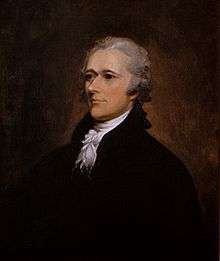 Alexander Hamilton: Founding Father of the United States; author of The Federalist Papers; 1st United States Secretary of the Treasury — King's College
Alexander Hamilton: Founding Father of the United States; author of The Federalist Papers; 1st United States Secretary of the Treasury — King's College.jpg) John Jay: Founding Father of the United States; author of The Federalist Papers; 1st Chief Justice of the United States; 2nd Governor of New York — King's College
John Jay: Founding Father of the United States; author of The Federalist Papers; 1st Chief Justice of the United States; 2nd Governor of New York — King's College Gouverneur Morris: Founding Father of the United States; author of the United States Constitution; United States Senator from New York — King's College
Gouverneur Morris: Founding Father of the United States; author of the United States Constitution; United States Senator from New York — King's College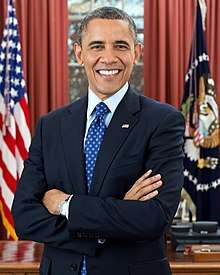 Barack Obama: 44th President of the United States; United States Senator from Illinois; Nobel laureate — Columbia College
Barack Obama: 44th President of the United States; United States Senator from Illinois; Nobel laureate — Columbia College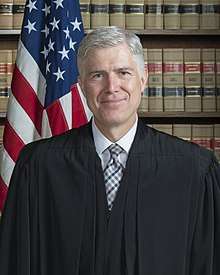 Neil Gorsuch, Associate Justice of the Supreme Court of the United States — Columbia College
Neil Gorsuch, Associate Justice of the Supreme Court of the United States — Columbia College William Barr: 77th and 85th United States Attorney General – Columbia College, Graduate School of Arts and Sciences
William Barr: 77th and 85th United States Attorney General – Columbia College, Graduate School of Arts and Sciences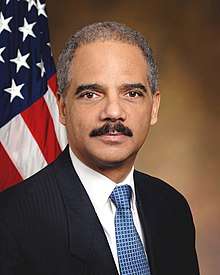 Eric Holder: 82nd United States Attorney General – Columbia College, Columbia Law School
Eric Holder: 82nd United States Attorney General – Columbia College, Columbia Law School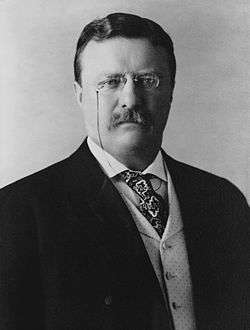 Theodore Roosevelt: 26th president of the United States; Nobel laureate – Columbia Law School
Theodore Roosevelt: 26th president of the United States; Nobel laureate – Columbia Law School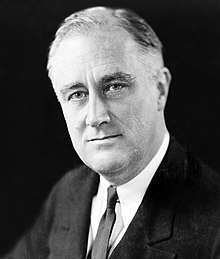 Franklin D. Roosevelt: 32nd president of the United States; 44th Governor of New York — Columbia Law School
Franklin D. Roosevelt: 32nd president of the United States; 44th Governor of New York — Columbia Law School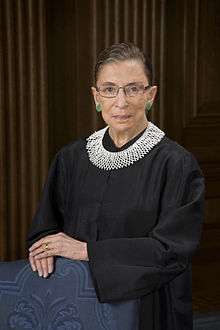 Ruth Bader Ginsburg: associate justice of the Supreme Court of the United States — Columbia Law School
Ruth Bader Ginsburg: associate justice of the Supreme Court of the United States — Columbia Law School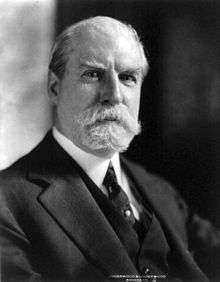 Charles Evans Hughes: 11th Chief Justice of the United States; 44th United States Secretary of State; 35th Governor of New York — Columbia Law School
Charles Evans Hughes: 11th Chief Justice of the United States; 44th United States Secretary of State; 35th Governor of New York — Columbia Law School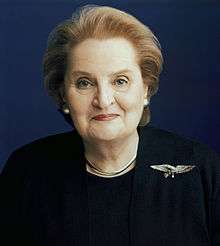 Madeleine Albright: 64th United States Secretary of State; first female Secretary of State — School of International and Public Affairs
Madeleine Albright: 64th United States Secretary of State; first female Secretary of State — School of International and Public Affairs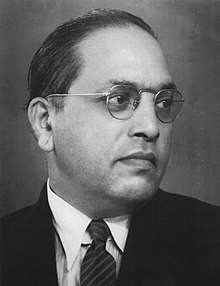 B. R. Ambedkar: Founding Father of India; architect of the Constitution of India; 1st Minister of Law and Justice — Graduate School of Arts and Sciences
B. R. Ambedkar: Founding Father of India; architect of the Constitution of India; 1st Minister of Law and Justice — Graduate School of Arts and Sciences Julian S. Schwinger: Nobel laureate; pioneer of quantum field theory; one of the greatest physicists of the 20th century — Columbia College
Julian S. Schwinger: Nobel laureate; pioneer of quantum field theory; one of the greatest physicists of the 20th century — Columbia College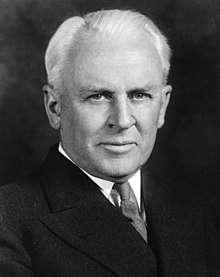 Robert A. Millikan: Nobel laureate; measured the elementary electric charge — Graduate School of Arts and Sciences
Robert A. Millikan: Nobel laureate; measured the elementary electric charge — Graduate School of Arts and Sciences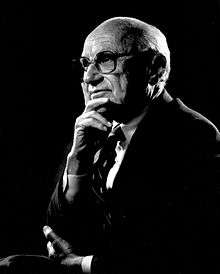 Milton Friedman: Nobel laureate — Graduate School of Arts and Sciences
Milton Friedman: Nobel laureate — Graduate School of Arts and Sciences Simon Kuznets: Nobel laureate; invented concept of GDP; Milton Friedman's doctoral advisor — School of General Studies, Graduate School of Arts and Sciences
Simon Kuznets: Nobel laureate; invented concept of GDP; Milton Friedman's doctoral advisor — School of General Studies, Graduate School of Arts and Sciences- Robert Kraft: billionaire; owner of the New England Patriots; chairman and CEO of the Kraft Group — Columbia College
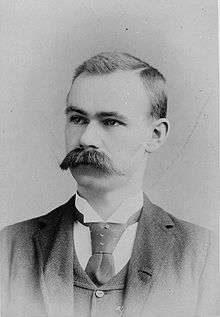 Herman Hollerith: inventor; co-founder of IBM – School of Engineering and Applied Sciences
Herman Hollerith: inventor; co-founder of IBM – School of Engineering and Applied Sciences Warren Buffett: CEO of Berkshire Hathaway; one of the world's wealthiest people — Columbia Business School
Warren Buffett: CEO of Berkshire Hathaway; one of the world's wealthiest people — Columbia Business School S. Robson Walton: chairman of Walmart; one of the world's wealthiest people — Columbia Law School
S. Robson Walton: chairman of Walmart; one of the world's wealthiest people — Columbia Law School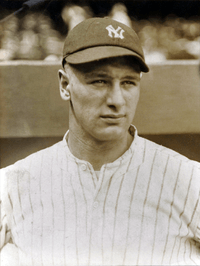 Lou Gehrig: Triple Crown winner; 2x MLB Most Valuable Player; 6x World Series Champion; member of Baseball Hall of Fame — Columbia College
Lou Gehrig: Triple Crown winner; 2x MLB Most Valuable Player; 6x World Series Champion; member of Baseball Hall of Fame — Columbia College Richard Rodgers: legendary Emmy, Grammy, Oscar, and Tony award-winning composer; Pulitzer Prize winner — Columbia College
Richard Rodgers: legendary Emmy, Grammy, Oscar, and Tony award-winning composer; Pulitzer Prize winner — Columbia College.png) Hamilton Fish: 26th United States Secretary of State; United States Senator from New York; 16th Governor of New York — Columbia College
Hamilton Fish: 26th United States Secretary of State; United States Senator from New York; 16th Governor of New York — Columbia College
See also
- The Bancroft Prize
- Barnard Center for Research on Women
- Columbia/Barnard Hillel, a Jewish student organization at Columbia University
- Columbia Center for New Media Teaching and Learning
- Columbia–Chicago School of Economics
- Columbia Glacier, a glacier in Alaska, U.S., named for Columbia University
- Columbia Grammar & Preparatory School, New York City
- Columbia Business Law Review, a monthly journal published by students at Columbia Law School
- Columbia Human Rights Law Review, a law review published by students at Columbia Law School
- Columbia Law Review, a monthly law review published by students at Columbia Law School
- Columbia MM, a text-based mail client developed at Columbia University
- Columbia Non-neutral Torus, a small stellarator at the Columbia University Plasma Physics Laboratory
- Columbia-Princeton Electronic Music Center (album), an album of electronic music released in 1961
- Columbia Revolt, a black-and-white 1968 documentary film
- Columbia Scholastic Press Association
- Columbia Secondary School, a secondary school formed with partnership with Columbia University
- Columbia Soccer Stadium at Columbia University
- Columbia Spelling Board a historic etymological organization
- Columbia University Partnership for International Development
- The Strawberry Statement
- Columbia Encyclopedia
- Conversio Virium
- Ditson Conductor's Award
- Department of Epidemiology, Columbia University
- The Earth Institute
- Louisa Gross Horwitz Prize
- Mount Columbia (Colorado)
- The School at Columbia University, New York City
- Columbia University in popular culture
Notes
- Founding Fathers include: Alexander Hamilton,[257] John Jay,[258] Robert R. Livingston,[259] Egbert Benson,[260] and Gouverneur Morris.[261]
- Foreign heads of state include: Muhammad Fadhel al-Jamali,[272] Giuliano Amato,[273] Hafizullah Amin,[274] Nahas Angula,[275] Marek Belka,[276] Fernando Henrique Cardoso,[277] Gaston Eyskens,[278] Mark Eyskens, Jose Ramos Horta,[279] Lee Huan,[280] Toomas Hendrik Ilves,[281] Wellington Koo,[282] Benjamin Mkapa,[283] Mikhail Saakashvili,[284] Mohammad Musa Shafiq,[285] Salim Ahmed Salim,[286] Ernesto Samper,[287] Tang Shaoyi,[288] Abdul Zahir,[287] Zhou Ziqi,[289] Wlodzimierz Cimoszewicz,[290] Sun Fo,[291] Chen Gongbo,[292] Nwafor Orizu[293] Juan Bautista Sacasa,[294] and T. V. Soong.[295]
References
- Universitas Columbiae Neo Eboracensis image miami.edu
- Moore, Nathanal Fischer (1846). A Historical Sketch of Columbia. New York, New York: Columbia University Press.
- Columbia University (2012). "Columbia University at a Glance". Retrieved April 12, 2012.
- As of June 30, 2019. "U.S. and Canadian 2019 NTSE Participating Institutions Listed by Fiscal Year 2019 Endowment Market Value, and Percentage Change in Market Value from FY18 to FY19 (Revised)". National Association of College and University Business Officers and TIAA. Retrieved April 18, 2020.
- "Full-time Faculty Distribution by School/Division, Fall 2009-2019" (PDF). Office of the Provost. Columbia University. Retrieved March 23, 2020.
- "Fall Headcount Enrollment by School, 2009-2018" (PDF). Columbia University Office of Provost. May 23, 2019.
- "Colors | Identity Guidelines". Retrieved August 9, 2018.
- "The Course of History". Columbia University. 2004. Retrieved November 22, 2004.
- McCaughey, Robert (2003). Stand, Columbia : A History of Columbia University in the City of New York. New York, New York: Columbia University Press. p. 1. ISBN 978-0-231-13008-0.
- "A Brief History of Columbia". Columbia University. 2011. Retrieved April 14, 2011.
- "Residential Life". Studentaffairs.columbia.edu. Retrieved August 3, 2015.
- Hewitt, Abram S (1965) [First published 1937 by Columbia University Press]. "Liberty, Learning, and Property : Dedication of the New Buildings of Columbia University, Morningside Heights, May 2, 1896" (PDF). In Nevins, Allan (ed.). Selected writings, with Introduction by Nicholas Murray Butler. Port Washington, N.Y.: Kennikat Press. pp. 315–337. OCLC 264897.
the time has come for a new and nobler civilization," ... when ... "the wealth which has accumulated in this city by the joint association of its people, and to which every human being contributes by his industry, shall come to be regarded as a sacred trust to be administered in the public interest for works of beneficence to all.
- Paez, Danny. "Incredible New Brain-Computer Interface Can Translate Thoughts Into Speech". Inverse. Retrieved January 30, 2019.
- "Artificial intelligence translates thoughts directly into speech in scientific first". The Independent. January 29, 2019. Retrieved January 30, 2019.
- "Columbia Researchers Developed Technology That Can Translate Brain Activity Into Words". Fortune.com. Retrieved January 30, 2019.
- Nykolaiszyn, J. M. (June 1, 2009). "Curating Oral Histories: From Interview to Archive". Oral History Review. 36 (2): 302–304. doi:10.1093/ohr/ohp054. ISSN 0094-0798. S2CID 161615270.
- Taylor, Nick (2000). Laser : the inventor, the Nobel laureate, and the thirty-year patent war. New York: Simon & Schuster. ISBN 978-0684835150. OCLC 44594104.
- "Isidor Isaac Rabi". Aps.org. Retrieved December 2, 2018.
- "Fermi at Columbia | Department of Physics". Physics.columbia.edu. Archived from the original on June 21, 2019. Retrieved December 2, 2018.
- "December 2, 1942: First self-sustained nuclear chain reaction". Retrieved November 20, 2018.
- N. D. Opdyke, et al., "Paleomagnetic study of Antarctic deep-sea cores," Science 154(1966): 349–357.
- Heirtzler, J. R., et al., "Marine magnetic anomalies, geomagnetic field reversals, and motions of the ocean floor and continents," Journal of Geophysical Research, 73(1968): 2119–2136.
- Pitman, W. and M. Talwani, "Sea-floor spreading in the North Atlantic," GSA Bulletin, 83(1972): 619–646.
- "Columbia University and IBM Establish New Center to Accelerate Innovation in Blockchain and Data Transparency | Columbia Engineering". Engineering.columbia.edu. Retrieved January 23, 2019.
- "Member Institutions". Association of American Universities. Retrieved April 18, 2011.
- Morris, Shaneka; Roebuck, Gary (July 11, 2019). "ARL Statistics 2017-2018". Cite journal requires
|journal=(help) - As of June 30, 2019. "U.S. and Canadian Institutions Listed by Fiscal Year (FY) 2019 Endowment Market Value and Change in Endowment Market Value from FY 2018 to FY 2019". National Association of College and University Business Officers and TIAA. Retrieved January 30, 2020.
- Kathleen Elkins. "More billionaires went to Harvard than to Stanford, MIT and Yale combined". CNBC. Retrieved July 5, 2018.
- Keppel, Fredrick Paul (1914). Columbia. Oxford, England: Oxford University Press. p. 26.
- Matthews, Brander; John Pine; Harry Peck; Munroe Smith (1904). A History of Columbia University: 1754–1904. London, England: Macmillan Company.
- Butler, Nicholas Murray (1912). An Official Guide to Columbia University. New York, New York: Columbia University Press.
- Schecter, Barnet (2002). The Battle for New York: The City at the Heart of the American Revolution. Walker & Company. ISBN 978-0-8027-1374-2.
- McCullough, David (2005). 1776. Simon & Schuster. ISBN 978-0-7432-2671-4.
- "No. 12910". The London Gazette. August 7, 1787. p. 373.
- A History of Columbia University, 1754–1904. New York: Macmillan. 1904. ISBN 978-1-4021-3737-2.
- Groce, C. G. (1937). William Samuel Johnson: A Maker of the Constitution. New York, New York: Columbia University Press.
- McCaughey, Robert (December 10, 2003). "Leading American University Producers of PhDs, 1861–1900". Stand, Columbia – A History of Columbia University. Columbia University Press. Archived from the original on September 9, 2006. Retrieved August 10, 2006.
- "Columbia University's Lunatic Past." Ephemeral New York website. May 5, 2008
- McCaughey, Robert (2012). Stand, Columbia: A History of Columbia University. Columbia University Press. ISBN 9780231503556.
- "History - Columbia University in the City of New York". Columbia.edu. Retrieved July 11, 2017.
- Broad, William J. (October 30, 2007). "Why They Called It the Manhattan Project". The New York Times. Retrieved October 30, 2007.
- McCaughey, Robert A. (2003). Stand, Columbia: A History of Columbia University in the City of New York ... – Robert A. McCaughey – Google Books. ISBN 9780231130080. Retrieved January 5, 2014.
- "Columbia Daily Spectator 3 April 1928 — Columbia Spectator". Spectatorarchive.library.columbia.edu. Retrieved November 24, 2016.
- Asimov, I. (1979) In Memory Yet Green, Avon Books, pp. 157, 159–160, 240
- "School of General Studies: History". Columbia School of General Studies. Archived from the original on July 19, 2011. Retrieved June 10, 2011.
- "What makes GS different from Columbia's traditional undergraduate colleges?". Gs.columbia.edu. Archived from the original on November 23, 2016. Retrieved November 24, 2016.
- "University Senate". Senate.columbia.edu. Retrieved November 24, 2016.
- "History – Columbia University School of Professional Studies". Sps.columbia.edu. Retrieved November 24, 2016.
- "History – Columbia University in the City of New York". Columbia.edu. Retrieved November 24, 2016.
- Kurlansky, Mark (2005). 1968: The Year That Rocked The World. New York, New York: Random House. pp. 194–199. ISBN 978-0-345-45582-6.
- Bradley, Stefan (2009). Harlem vs. Columbia University: Black Student Power in the Late 1960s. New York, New York: University of Illinois. pp. 5–19, 164–191. ISBN 978-0-252-03452-7.
- Reception honors anniversary of CC coeducation | Columbia Daily Spectator. Columbiaspectator.com. Retrieved on September 7, 2013.
- "Partnership with Columbia".
- "GSAS at a Glance – Columbia University – Graduate School of Arts and Sciences". Archived from the original on March 10, 2014. Retrieved November 24, 2016.
- "History – Faculty of Arts and Sciences". Fas.columbia.edu. Retrieved November 24, 2016.
- Soler, Alina. "Columbia University". New York. Archived from the original on October 17, 2017. Retrieved July 17, 2017.
- Duncan, Steve (March 31, 2006). "Finding History In Radioactive Storage Rooms". Undercity.org. Archived from the original on February 17, 2007. Retrieved April 16, 2011.
- Duncan, Steve (July 20, 2005). "Old Coal Hoppers, Columbia University". Undercity.org. Archived from the original on February 17, 2007. Retrieved April 16, 2011.
- "Butler Library: Self-Guided Tour" (PDF). Columbia University. Retrieved April 11, 2011.
- "Libraries and Collections: Fast Facts". Columbia University. Retrieved April 11, 2013.
- "The Nation's Largest Libraries: A Listing By Volumes Held". American Library Association. Retrieved April 11, 2013.
- Carolyn Pitts (1987). "National Register of Historic Places Inventory-Nomination: Low Memorial Library, Columbia". National Park Service.
- "National Register of Historic Places Inventory-Nomination: Pupin Physics Laboratories, Columbia University--Accompanying photos". National Park Service. 1983.
- Robert D. Colburn (July 2002) National Historic Landmark Nomination: Philosophy Hall, National Park Service and Accompanying 13 photos, exterior and interior, from c.1922-2001
- Smithsonian American Art Museum's Inventories of American Painting and Sculpture. "Alma Mater (sculpture)". The Smithsonian Institution. Retrieved April 14, 2011.
- Meredith Foster (February 11, 2011). "The Myth of the College Sweetheart". The Eye. Columbia Spectator. Archived from the original on March 7, 2011. Retrieved April 14, 2011.
- "What Is the Mace? A Guide to Columbia's Icons". Columbia University Record. May 19, 1999. Retrieved April 16, 2011.
- Richard P. Dober. "The Steps at Low Library" (PDF). Dober, Lidsky, Craig and Associates, Inc. Archived from the original (PDF) on August 14, 2011. Retrieved April 11, 2011.
- "Columbia University Steps". Project for Public Spaces. Archived from the original on July 6, 2011. Retrieved April 11, 2011.
- Columbia, Manhatanville. "Manhattanville Columbia".
- "Manhattanville in West Harlem". Retrieved April 1, 2007.
- Williams, Timothy (November 20, 2006). "In West Harlem Land Dispute, It's Columbia vs. Residents". The New York Times.
- Williams, Timothy (September 21, 2008). "2 Gas Stations, and a Family's Resolve, Confront Columbia Expansion Plan". The New York Times. Retrieved March 28, 2010.
- Astor, Maggie; Kim Kirschenbaum (December 18, 2008). "M'ville Expansion Clears Last Major Hurdle, State Approves Eminent Domain". Columbia Spectator. Retrieved August 12, 2009.
- "Columbia Manhattanville Project". Press Release. May 20, 2009. Archived from the original on May 6, 2010. Retrieved August 12, 2009.
- "NYP: Weschster". NewYork-Presbyterian Hospital. Archived from the original on October 4, 2011. Retrieved April 18, 2011.
- "Manhattanville in West Harlem". Columbia University. Archived from the original on December 12, 2014. Retrieved April 11, 2011.
- "Projects: Green Buildings". Columbia Environmental Stewardship. Archived from the original on May 8, 2014. Retrieved April 11, 2011.
- "Columbia Greenmarket". GrowNYC. Retrieved April 11, 2011.
- "Columbia University Green Report Card". The College Sustainability Report Card. Retrieved April 11, 2011.
- "Columbia University Green Report Card". College Sustainability Report Card. Retrieved April 18, 2011.
- "U.S. Potential Natural Vegetation, Original Kuchler Types, v2.0 (Spatially Adjusted to Correct Geometric Distortions)". Retrieved August 14, 2019.
- Korn, Melissa (March 27, 2020). "Acceptance Rates at Harvard, Other Ivy League Schools Edge Up". Wall Street Journal. ISSN 0099-9660. Retrieved April 14, 2020.
- U.S. News & World Report, Americas Best Rankings 2012, National University Rankings, Selectivity Ranking (the former is available only in the print edition and—for purchase—in the online premium edition)
- "Financial Aid Statistics". Columbia University.
- "Columbia University Tuition And Costs". Collegedata.com. Retrieved November 22, 2016.
- Beatty, Sally (April 11, 2007). "Columbia to Get Huge Bequest from John Kluge". The Wall Street Journal. Retrieved March 14, 2018.
- "Columbia University to Offer Financial Aid to More Students". The New York Times. March 11, 2008. Retrieved March 28, 2010.
- Steinberg, Jacques (March 23, 2010). "Columbia, Michigan and Connecticut Among 25 Colleges to Add Common Application". The New York Times. Retrieved April 11, 2011.
- "The Named Scholars". Studentaffairs.columbia.edu. Retrieved August 3, 2015.
- Gross, Jessica (November 10, 2013). "Who Made That College Application?". The New York Times. Retrieved August 31, 2018.
- von Mayrhauser, Melissa (November 11, 2011), China-funded institute tests Columbia's commitment to academic integrity, Columbia Spectator.
- "Schools of Columbia University". Columbia University. Retrieved June 20, 2011.
- "Academics". Columbia University. Retrieved February 14, 2018.
- "Board of Trustees". Columbia University. Retrieved April 17, 2011.
- "Columbia University Senate". Columbia University. Retrieved April 17, 2011.
- "Election packet" (PDF). 2017.
- "Elections". Senate.columbia.edu.
- "Office of the President: Lee Bollinger". Columbia.edu. Retrieved April 14, 2011.
- "Schools of Columbia University". Columbia University. Retrieved April 17, 2011.
- "Frequently Asked Questions - Barnard College". Barnard.edu. Archived from the original on February 25, 2019. Retrieved March 23, 2019.
- "CHARTERS AND STATUTES : Columbia University in the City of New York" (PDF). Provost.columbia.edu. Retrieved March 23, 2019.
- "Cross-Registration: Columbia and Barnard College - Office of the University Registrar". Registrar.columbia.edu. Retrieved March 23, 2019.
- "JTS Joint Program". Gs.columbia.edu. Retrieved January 19, 2018.
- "Columbia-Juilliard Program | Columbia Undergraduate Admissions". Undergrad.admissions.columbia.edu. Retrieved January 19, 2018.
- Patti, Jill Pasternak, Joe. "Crossing Boundaries from Past to Future: Pianist Conrad Tao on Crossover". Retrieved January 19, 2018.
- "Charters and Statutes" (PDF). Secretary.columbia.edu.
- "Charters and Statutes" (PDF). 2017. p. 97.
- "Fact Sheet - Barnard College". Barnard.edu.
- "Joint LLB/Juris Doctor (JD) with Columbia University, New York". University College London. Retrieved July 29, 2016.
- "Dual BA Program Between Columbia University and Sciences Po". Gs.columbia.edu. Retrieved August 3, 2015.
- "Joint Bachelor's Degree Program between City University of Hong Kong and Columbia University". Gs.columbia.edu. Retrieved August 12, 2016.
- "Dual BA Program | Trinity College Dublin". Gs.columbia.edu. Archived from the original on December 11, 2017. Retrieved January 6, 2018.
- "Columbia-Juilliard Exchange". Undergrad.asmissions.columbia.edu.
- "Columbia University Global Centers". Columbia University. Archived from the original on October 28, 2011. Retrieved May 4, 2011.
- "How the Left Should Respond to Ethnic Cleansing in China". The Nation. January 15, 2019.
- https://historyandliterature.columbia.edu/content/courses-french-universities
- "Academic Ranking of World Universities 2020: National/Regional Rank". Shanghai Ranking Consultancy. Retrieved August 15, 2020.
- "America's Top Colleges 2019". Forbes. Retrieved August 15, 2019.
- "U.S. College Rankings 2020". Wall Street Journal/Times Higher Education. Retrieved September 26, 2019.
- "Best Colleges 2020: National University Rankings". U.S. News & World Report. Retrieved September 8, 2019.
- "2019 National University Rankings". Washington Monthly. Retrieved August 20, 2019.
- "Academic Ranking of World Universities 2020". Shanghai Ranking Consultancy. 2020. Retrieved August 15, 2020.
- "QS World University Rankings® 2021". Quacquarelli Symonds Limited. 2020. Retrieved June 10, 2020.
- "World University Rankings 2020". THE Education Ltd. Retrieved September 14, 2019.
- "Best Global Universities Rankings: 2020". U.S. News & World Report LP. Retrieved October 22, 2019.
- "Columbia University - U.S. News Best Grad School Rankings". U.S. News & World Report. Retrieved April 27, 2020.
- "Columbia University - U.S. News Best Global University Rankings". U.S. News & World Report. Retrieved April 27, 2020.
- "2020 Best National University Rankings". U.S. News & World Reports. 2020. Retrieved April 23, 2020.
- https://www.topuniversities.com/university-rankings/usa-rankings/2020
- "Wall Street Journal/Times Higher Education College Rankings 2020". Wall Street Journal/Times Higher Education. Retrieved May 7, 2020.
- DI releases Design School Rankings for 2013, Archinect News, Reporting rankings from DesignIntelligence for best Architecture and Design Schools. By James P. Cramer of DI. November 1, 2012. Retrieved November 3, 2012.
- "top journalism colleges -- Education-Portal.com --". December 10, 2005. Archived from the original on December 10, 2005.
- "Top 10 Journalism Schools in the U.S". Education-portal.com. Retrieved October 30, 2010.
- "Faculty | Columbia University Office of Undergraduate Admissions". Studentaffairs.columbia.edu. Retrieved February 22, 2010.
- "Nobel Prize Winners: Current Faculty". Columbia University. Retrieved April 11, 2011.
- "Faculty". Columbia University Office of Undergraduate Admissions. 2005. Retrieved August 10, 2006.
- "Members By Parent Institution". National Academy of Engineering. Archived from the original on June 15, 2006. Retrieved August 10, 2006.
- "Membership Directory". Institute of Medicine of the National Academies. Archived from the original on September 26, 2007. Retrieved August 10, 2006.
- BRIAN TUMULTY (April 13, 2015). "Half of N.Y. colleges pay profs less than $100K". Ithaca Journal. Retrieved August 3, 2015.
- "Carnegie Classifications Institution Lookup". carnegieclassifications.iu.edu. Center for Postsecondary Education. Retrieved July 18, 2020.
- Guenther, Katja (2015). Localization and Its Discontents: A Genealogy of Psychoanalysis and the Neuro Disciplines. Chicago: University of Chicago Press. p. 155. ISBN 978-0-226-28820-8.
- "Columbia To Go" (PDF). Columbia University. Archived from the original (PDF) on June 5, 2007. Retrieved April 29, 2007.
- Herper, Matthew (July 26, 2001). "Biotech's Glowing Breakthrough". Forbes. Retrieved February 27, 2008.
- "New Inventions / New Discoveries" (PDF). Columbia University Science and Technology Ventures. Archived from the original (PDF) on June 13, 2007. Retrieved April 29, 2007.
- "Science and Technology Ventures – Success Stories". Columbia University Science and Technology Ventures. Archived from the original on February 21, 2008. Retrieved February 27, 2008.
- Reedy, Katie (November 28, 2006). "Patents Bring in the Cash to Columbia". Columbia Spectator. Retrieved July 11, 2016.
- "U.S. Military Veterans". Gs.columbia.edu. Retrieved March 23, 2019.
- "About - Teachers College, Columbia University". Tc.columbia.edu. Retrieved March 23, 2019.
- "Headcount enrollment by school, race/ethnicity, and citizenship, Fall 2014". Columbia University Office of Planning and Institutional Research. September 12, 2014.
- See Demographics of the United States for references.
- "Office of Planning and Institutional Research – Office of the Provost". Columbia.edu.
- "Office of Planning and Institutional Research – Office of the Provost". Columbia.edu.
- "Facts and Figures | Columbia Financial Aid and Educational Financing". Cc-seas.financialaid.columbia.edu. Retrieved January 28, 2019.
- "Quick Fact: First Generation | Columbia Undergraduate Admissions". undergrad.admissions.columbia.edu. Retrieved April 1, 2019.
- "Housing and Dining". Columbia University Office of Student Affairs. Retrieved April 16, 2011.
- Office of Undergraduate Admissions site about Campus Life. Retrieved September 12, 2007.
- "The Alpha Delta Phi Society: About Us". Archived from the original on February 7, 2011. Retrieved April 11, 2011.
- "Fraternity and Sorority Life at Columbia". Columbia University. Retrieved April 17, 2011.
- "Columbia Daily Spectator". Retrieved August 10, 2006.
- "Blue & White". Retrieved August 10, 2006.
- "The Columbia Current".
- "Columbia Political Review". Retrieved December 26, 2008.
- "AdHoc". Retrieved August 10, 2006.
- "The Columbia Review". Archived from the original on August 4, 2006. Retrieved August 10, 2006.
- "Columbia Journal of Literary Criticism". Archived from the original on October 9, 2006. Retrieved December 7, 2006.
- "The Mobius Strip". Retrieved August 10, 2006.
- "Inside New York". Archived from the original on July 3, 2011. Retrieved October 26, 2009.
- "Journal of Politics & Society". Retrieved August 10, 2006.
- "Publius: About". Archived from the original on July 27, 2011. Retrieved April 17, 2011.
- "East Asia Review: About Us". East Asia Review. Archived from the original on April 20, 2011. Retrieved April 17, 2011.
- "The Birch". Retrieved August 10, 2006.
- "History and Vision". Columbia Science Review. Retrieved April 17, 2011.
- "The Fed". Archived from the original on August 4, 2006. Retrieved August 10, 2006.
- "Jester of Columbia". Archived from the original on July 13, 2011. Retrieved August 10, 2006.
- "The Columbian". Columbia University. Retrieved April 17, 2011.
- "The Gadfly: About". The Gadlfy. Archived from the original on May 9, 2011. Retrieved April 17, 2011.
- "The Rhapsody". Columbia University. Archived from the original on June 24, 2010. Retrieved April 17, 2011.
- "Current Musicology". Retrieved August 10, 2006.
- "The Journal of Philosophy". Retrieved August 10, 2006.
- "About Us: Mission Statement". Columbia Journalism Review. Retrieved April 16, 2011.
- ""The Original FM": The Columbia University Radio Club". Columbia University. 2009. Retrieved January 12, 2013.
- "CTV News". Archived from the original on November 4, 2006. Retrieved August 10, 2006.
- "CTV". Archived from the original on August 20, 2006. Retrieved August 10, 2006.
- "History". Philolexian Society. February 1, 2010. Retrieved April 11, 2011.
- Jaynes, Gregory (December 5, 1987). "No, Not a Curse But a Jersey Prize For Worst Verse". The New York Times. Retrieved April 16, 2011.
- "Columbia Parliamentary Debate Team". Retrieved August 10, 2006.
- "CIRCA – About". Archived from the original on July 25, 2011. Retrieved August 10, 2006.
- "CIRCA – Traveling team awards". Archived from the original on July 25, 2011. Retrieved August 10, 2006.
- Jon Swartz (September 17, 2013). "Square's Jack Dorsey goes recruiting in NYC". USA Today. Retrieved August 3, 2015.
- Cormier, Amanda (October 7, 2010). "Columbia's Web 3.0". The Eye. Archived from the original on November 2, 2010. Retrieved October 30, 2010.
- "Engaged Entrepreneurship". Columbia University. Archived from the original on December 10, 2010. Retrieved April 16, 2011.
- Kathleen, Mary (June 7, 2010). "Mecca on the Hudson?". The Deal. Archived from the original on September 8, 2010. Retrieved October 30, 2010.
- Wortham, Jenna (March 6, 2010). "New York Isn't Silicon Valley, and That's Why They Like It". The New York Times.
- "Mayor Bloomberg launches NYC Media Lab" (Press release). The City of New York. June 14, 2010. Retrieved October 30, 2010.
- "Athletics". Columbia University. Retrieved April 16, 2011.
- Carft, Julie (July 29, 1989). "Image is Heavy Burden – Weightlifter Karyn Marshall Feels Pressure to Project 'Femininity, Intelligence'". Los Angeles Times. Retrieved October 2, 2009.
- Lidz, Franz (March 21, 1988). "A Lift For Wall Street". Sports Illustrated. Archived from the original on October 11, 2011. Retrieved June 28, 2009.
- Baker Field: Birthplace of Sports Television Archived October 7, 2008, at the Wayback Machine. Columbia University.
- "20th-Century Greats". Columbia University. Retrieved April 11, 2011.
- "Columbia Athletics Highlight". Columbia University. 2004. Retrieved April 11, 2011.
- Losing streak. Wikicu.com. Retrieved on September 7, 2013.
- "About the World Leaders Forum". Worldleaders.columbia.edu. Archived from the original on August 28, 2015. Retrieved August 3, 2015.
- "World Leaders Forum: Frequently Asked Questions". Worldleaders.columbia.edu. Archived from the original on July 19, 2011. Retrieved April 11, 2011.
- "Participants | Columbia University World Leaders Forum". Worldleaders.columbia.edu. Archived from the original on September 17, 2010. Retrieved October 30, 2010.
- "Columbia University Orchestra". Archived from the original on June 24, 2015. Retrieved August 3, 2015.
- "CUPAL: Member Organizations". Columbia University of Performing Arts. Retrieved April 16, 2011.
- "Orgo Night! A Columbia University Marching Band Tradition". Columbia University Marching Band. Archived from the original on June 22, 2010. Retrieved April 11, 2011.
- "About Us". Columbia Queer Alliance. Retrieved April 16, 2011.
- Queer Man on Campus: A History of Non-heterosexual College Men, 1945–2000. Psychology Press. 2002. p. 167. ISBN 978-0-415-93336-0.
- "Columbia University Hamilton Society: About". Retrieved April 11, 2011.
- "Community Impact". Columbia University. Retrieved December 29, 2010.
- "Burke's Expulsion: Columbia's Shame". Columbia Daily Spectator. Retrieved May 24, 2019.
- "Columbia vs. the Jews, Again". The Weekly Standard. May 8, 2018. Retrieved May 24, 2019.
- "Columbia's Radicals of 1968 Hold a Bittersweet Reunion". The New York Times. April 28, 2008.
- "Columbia University – 1968". Columbia.edu. Retrieved August 3, 2015.
- Hevesi, Dennis. "Gym Groundbreaking Will Be Held Next Month", Columbia Spectator, September 29, 1966.
- George Keller. Columbia College Today (PDF). Columbia University. Archived from the original (PDF) on June 14, 2011. Retrieved April 11, 2011.
- Bradley, Stefan (2009). Harlem vs. Columbia University: Black Student Power in the Late 1960s. New York, New York: University of Illinois. pp. 5–19, 164–191, 174. ISBN 978-0-252-03452-7.
- "Disinvestment from South Africa#University campuses"
- "Columbia Senate Supports Selling South African Stocks Selectively". The New York Times. May 7, 1978.
- "Trustees vote for divestiture from backers of S. African government". Columbia Spectator. June 8, 1978.
- "400 sign petition against offering Kissinger faculty post". Columbia Spectator. March 3, 1977.
- "Demonstration at Columbia". New York Daily News. May 2, 1978.
- "Student Sit-in at Columbia". New York Post. May 2, 1978.
- "President Bollinger's Statement About President Ahmadinejad's Scheduled Appearance". Columbia News. September 19, 2007.
- "Candidates Speak Out On Ahmadinejad Visit". CBS News. September 24, 2007.
- "Iran president in NY campus row". BBC News Online. September 25, 2007. Retrieved March 11, 2010.
- Vincent, Isabel (November 22, 2009). "Schools' Iran $ pipeline". New York Post. Retrieved February 8, 2013.
- Feith, David J., "Duty, Honor, Country… and Columbia", National Review, September 15, 2008. Archived September 17, 2008, at the Wayback Machine
- Army ROTC at Fordham University Archived November 29, 2014, at the Wayback Machine Accessed September 9, 2010
- "U.S. Air Force ROTC – College Life – College". Afrotc.com. Archived from the original on December 5, 2010. Retrieved February 22, 2010.
- "AFROTC Detachment 560, "The Bronx Bombers", CROSS-TOWN SCHOOLS". Archived from the original on April 27, 2014. Retrieved January 14, 2009.
- NAVY ROTC IN NEW YORK CITY Archived June 18, 2013, at the Wayback Machine
- McGurn, William, "A Columbia Marine To Obama: Help!", Wall Street Journal, September 30, 2008, Page 17.
- Colleges and Universities with NROTC Units Archived August 2, 2007, at the Wayback Machine
- Karni, Annie, "", New York Post, February 20, 2011.
- , "Huff Post College", April 2, 2011.
- "Navy and Columbia Sign NROTC Agreement". Columbia University. May 26, 2011. Archived from the original on October 8, 2011. Retrieved August 20, 2011.
- Sestanovich, Clare (March 20, 2015). "Columbia Students to Lee Bollinger: Divest From Prisons Now!". The Nation. ISSN 0027-8378. Retrieved November 14, 2017.
- "The New Divestment Movement". Retrieved November 14, 2017.
- Wilfred Chan. "Columbia is first U.S. university to divest from prisons". Cnn.com. Retrieved November 14, 2017.
- "Columbia Cram Session Can Be Fun, Too". The New York Times. December 20, 1975. Retrieved April 23, 2018.
- "If you go to Orgo Night, you're part of the problem". Columbia Daily Spectator. Retrieved April 23, 2018.
- Taylor, Kate (May 9, 2015). "This Year, Columbia Event Finds Joke Fodder in Sexual Assault Debate". The New York Times. Retrieved December 22, 2017.
- "University denies marching band access to Butler Library for Orgo Night – Columbia Daily Spectator". Columbiaspectator.com. Retrieved January 20, 2017.
- "Bollinger defends University's decision to ban Orgo Night from Butler – Columbia Daily Spectator". Columbiaspectator.com. Retrieved January 20, 2017.
- "Orgo Night!". Columbiabandalumni.org. Retrieved April 23, 2018.
- "In Defense of Orgo Night". Retrieved January 20, 2017.
- "University stands by decision to ban Orgo Night from Butler as alumni pressure mounts - Columbia Daily Spectator". cColumbiaspectator.com. Retrieved July 11, 2017.
- Piper, Greg (December 21, 2017). "How Columbia's politically incorrect marching band outwitted the administration's censorship attempt". The College Fix. Retrieved December 22, 2017.
- 1 Comments (May 3, 2018). "Orgo Night Spring 2018 Liveblog – Bwog". Bwog.com. Retrieved September 17, 2018.
- Jason Hollander. "Holiday Season Ushered In With Tree-Lighting Ceremony". Columbia University News. Retrieved April 15, 2011.
- Hollander, Jason (December 3, 1999). "Holiday Season Ushered In With Tree-Lighting Ceremony". Columbia News. Retrieved August 10, 2006.
- "The Varsity Show, April 15–18". Columbia University. January 10, 2005. Retrieved December 3, 2006.
- Chernow, Ron (2004). Alexander Hamilton. Penguin Books. p. 51. ISBN 978-1-59420-009-0.
- "A Brief Biography of John Jay". The Papers of John Jay. Columbia University. 2002.
- Dangerfield, George (1960). Chancellor Robert R. Livingston of New York, 1746–1813. New York, New York: Harcourt, Brace and Co.
- "Egbert Benson". Biographical Directory of the United States Congress. Retrieved April 16, 2011.
- Wright Jr., Robert K (1987). "Gouverneur Morris". Soldier-Statesmen of the Constitution. United States Army Center of Military History. CMH Pub 71-25. Retrieved April 13, 2011.
- "Columbia Arts Alumni". Columbia University. Archived from the original on January 23, 2011. Retrieved June 28, 2011.
- "The Presidents of the United States – Biographical Sketches". US National Park Service. Archived from the original on June 30, 2007. Retrieved April 13, 2011.
- "The Universities Churning Out The Most Billionaires". Forbes. November 29, 2016.
- Marie Thibault. "In Pictures: Billionaire University". Forbes. Retrieved April 12, 2011.
- "Columbia News Announcement". Columbia.edu. Retrieved April 16, 2011.
- "Tribute: The Legacy of Ruth Bader Ginsburg and WRP Staff". American Civil Liberties Union. March 7, 2006. Retrieved April 16, 2011.
- Albright, Madeleine (2003). Madam Secretary: A Memoir. Miramax. p. 71. ISBN 978-0-7868-6843-8.
- Martin, Justin (October 15, 2009). Greenspan: The Man behind Money. Cambridge, Massachusetts: Basic Books. pp. 27–31. ISBN 978-0-7382-0275-4.
- Tucker-Hamilton, Racine; Hickey, Matthew (December 17, 2004). "Interview with Eric H. Holder, Jr". Oral history project. The History Makers. Archived from the original (Interview) on December 21, 2008. Retrieved November 18, 2008.
- "Columbia 250: Dwight Eisenhower". Columbia University. Retrieved May 3, 2011.
- Muhammad Fadhel al-Jamali. "Experiences In Arab Affairs". Harvard University. Retrieved April 18, 2011.
- Daniel Peterson (November 29, 2007). "An Interview with Giuliano Amato". The Florentine. Archived from the original on December 31, 2015. Retrieved April 18, 2011.
- Amstutz, Bruce (1994). Afghanistan: The First Five Years of Soviet Occupation. DIANE Publishing. p. 303. ISBN 978-0-7881-1111-2.
- "Namibia PM is Nahas Angula...Educated in the US". Newsday. October 13, 2009. Retrieved April 18, 2011.
- "The Biography of Marek Belka". United Nations. Archived from the original on February 5, 2009. Retrieved April 18, 2011.
- "Fernando Henrique Cardoso". Fulbright Association. Archived from the original on March 16, 2011. Retrieved April 18, 2011.
- "Honorary Degree Recipients" (PDF). Columbia University. p. 8. Archived from the original (PDF) on September 13, 2011. Retrieved April 18, 2011.
- Alyssa Smith (October 7, 2010). "State Building Challenges in Timor Leste". Columbia Communique. Archived from the original on August 13, 2011. Retrieved April 18, 2011.
- Kerry Brown (December 12, 2010). "Lee Huan obituary". The Guardian. UK. Retrieved April 18, 2010.
- Herb Jackson. "From Estonia to Leonia". Estonian Office of the President. Archived from the original on May 14, 2011. Retrieved April 18, 2011.
- "Columbia 250: Wellington Koo". Columbia University. Retrieved April 18, 2011.
- "Benjamin Mkapa". Encyclopedia.com. Retrieved April 18, 2011.
- "Profile: Mikhail Saakashvili". BBC News Online. January 25, 2004. Retrieved April 18, 2011.
- "Historical Note on Afghanistan" (PDF). United Nations. p. 15. Archived from the original (PDF) on July 23, 2011. Retrieved April 11, 2011.
- "Biography of Salim Ahmed Salim". United Nations. Retrieved April 18, 2011.
- "U.S. Students yesterday, world leaders tomorrow". U.S. Department of Education. Archived from the original on November 25, 2005. Retrieved April 11, 2011.
- Reilly, Taylor (1997). Science and Football III. Taylor and Francis. p. 348. ISBN 978-0-419-22160-9.
- Gerth, Karl (2004). China made: Consumer Culture and the creation of the nation. Harvard University. p. 224. ISBN 978-0-674-01654-5.
- "Charlemagne: Wlodzimierz Cimoszewicz". The Economist. November 1, 2001. Retrieved June 17, 2011.
- Boorman, Howard (1970). Biographical dictionary of Republican China. Columbia University Press. pp. 163–165.
- Reilly, Thomas (1997). Science and Football III. Taylor & Francis. pp. 46–47. ISBN 978-0-419-22160-9.
- "Education: Prince with a Purpose". Time Magazine. January 1, 1945. Retrieved June 17, 2011.
- "Juan Bautista Sacasa". Encyclopædia Britannica. Retrieved June 17, 2011.
- "T. V. Soong (Song Ziwen) – A Prominent Businessman and Politician in Republic of China". Cultural China. Archived from the original on October 5, 2011. Retrieved June 17, 2011.
- "Alumnus, Author of Indian Constitution Honored".
- "Letters To The Editor; The Interesting Career Of John Jacob Astor Ii. A Man Of Broad And Generous Sympathies Who Appreciated The Responsibilities Of Wealth". The New York Times. August 24, 1890. Retrieved April 14, 2011.
- Reynolds, Cuyler (1914). Genealogical and family history of southern New York and the Hudson River Valley. Lewis Historical Pub. Co. p. 1263. Retrieved April 16, 2011.
William Waldorf Astor columbia law school.
- "World's Billionaires: Warren Buffett". Forbes Magazine. March 1, 2011. Retrieved April 12, 2011.
- Murray, Michael (1999). Encyclopedia of Television News. Greenwood Publishing. ISBN 978-1-57356-108-2.
- Serwer, Andy (November 15, 2004). "The Waltons: Inside America's Richest Family". Fortune.com. Retrieved April 12, 2011.
- "Bain to Manage Harvard Endowment's $3.4 Billion of Real Estate". Bloomberg.com. December 15, 2017. Retrieved January 26, 2018.
- "Columbia College awards highest honor to Jonathan S. Lavine, CC '88 - Columbia Daily Spectator". Columbiaspectator.com. Retrieved January 26, 2018.
- The Age (2009). Melbourne-raised Gorman new chief of Morgan Stanley. Retrieved September 13, 2009.
- "Robert J. Stevens". Lockheed Martin. Archived from the original on May 3, 2011. Retrieved April 16, 2011.
- "Business Profile: Philippe P. Dauman". Bloomberg Business. Retrieved April 16, 2011.
- "Xerox's next CEO: Ursula Burns". Fortune Magazine. May 22, 2009. Archived from the original on July 8, 2011. Retrieved April 16, 2011.
- "Office of the Secretary of The University". Columbia University. Archived from the original on October 29, 2010. Retrieved April 15, 2011.
- Sicherman, Barbara; Green, Carol Hurd (1993). Notable American women : the modern period ; a biographical dictionary (6th pring. ed.). Cambridge, Mass [u.a.]: Belknap Press of Harvard Univ. Press. p. 453. ISBN 978-0-674-62733-8. Retrieved March 17, 2015.
- "Herman Hollerith". IBM. Retrieved April 11, 2011.
- Tsividis, Yannis (Spring 2002). "Edwin Armstrong: Pioneer of the Airwaves". Columbia Alumni Magazine. Retrieved April 15, 2011.
- Allen, Thomas (2007). Rickover: Father of the Nuclear Navy. Brassey's. p. 12. ISBN 978-1-57488-704-4.
- Richmond Ezer Escolar (June 11, 2008). "Google Conquers China: An Interview with Kai-Fu Lee". Columbia Business School Chazen Web Journal. Archived from the original on April 4, 2012. Retrieved April 12, 2012.
- Green, Michelle (1986). "Stephen Jay Gould: driven by a hunger to learn and to write". People 25 (June 2): 109-114.
- David Goodstein. "In the Case of Robert Andrews Millikan" (PDF). American Scientist: 54–60.
- "Michael Pupin". Columbia University: Department of Physics. Archived from the original on January 9, 2011. Retrieved April 16, 2011.
- "William Barclay Parsons". Columbia University. Retrieved April 16, 2011.
- "Irwin Edman". Columbia University. Retrieved April 16, 2011.
- Ryan, Alan (January 30, 2001). "Obituary: Professor Robert Nozick". The Independent. London. Retrieved April 16, 2011.
- "Columbia University 250: Milton Friedman". Retrieved April 16, 2011.
- Ogilvie, Marilyn; Harvey, Joy, eds. (2000). The biographical dictionary of women in science : pioneering lives from ancient times to the mid-20th century. New York, NY [u.a.]: Routledge. p. 65. ISBN 978-0-415-92039-1.
- Saxon, Wolfgang. "Rose L. Coser, 78; Taught Sociology At Stony Brook". The New York Times.
- Vromen, Suzanne. "Rose Laub Coser". Jwa.org.
- Rodgers, Richard. Musical Stages: An Autobiography (2002 Reissue), pp. 12, 20–21, 44. Cambridge, MA: Da Capo Press. ISBN 0-306-81134-0
- Hischak, Thomas (2007). The Rodgers and Hammerstein Encyclopedia. Westport, CT: Greenwood Publishing. p. 9. ISBN 978-0-313-34140-3.
- Hughson Mooney, "Lorenz Hart" Archived September 1, 2012, at the Wayback Machine, PBS, Excerpted from the DICTIONARY OF AMERICAN BIOGRAPHY, SUPPLEMENT 3: 1941–1945. American Council of Learned Societies, 1973. Reprinted by permission of the American Council of Learned Societies, retrieved April 18, 2011
- Herman, Jan (February 6, 1977). "TV Makes You Famous; Rock 'n Roll Makes You Rich". Gannett News Service.
- Literature Resource Center: "The Beat Generation". Retrieved November 13, 2013.
- "Columbia University 250: Langston Hughes". Columbia University. Retrieved April 17, 2011.
- "Columbia University 250: Isaac Asimov". Columbia University. Retrieved April 17, 2011.
- Alexander, Paul (1999). Salinger: A Biography. Los Angeles: Renaissance. ISBN 978-1-58063-080-1.
- Encyclopædia Britannica: "Upton Sinclair". Retrieved April 15, 2011.
- "Award winning writer Danielle Evans featured in Southeastern's 'Common Read' program". Southeastern Louisiana University. Retrieved March 23, 2017.
- Thompson, Hunter (1998). Douglas Brinkley (ed.). The Proud Highway: Saga of a Desperate Southern Gentleman (1st ed.). Ballantine Books. p. 139. ISBN 978-0-345-37796-8.
- "Film Obituaries; Sidney Lumet". The Daily Telegraph. London. April 9, 2011. Retrieved April 16, 2011.
- "School of the Arts Alumna Kathryn Bigelow Wins Major British Film Award". Columbia University. February 22, 2010. Archived from the original on July 24, 2011. Retrieved April 16, 2011.
- Gussow, Mel (August 18, 1995). "Howard Koch, a Screenwriter For 'Casablanca,' Dies at 93". The New York Times. Retrieved April 11, 2011.
- Flint, Peter (February 6, 1993). "Joseph L. Mankiewicz, Literate Skeptic of the Cinema, Dies at 83". The New York Times. Retrieved April 11, 2011.
- Flint, Peter (March 31, 1986). "James Cagney Is Dead at 86; Master of Pugnacious Grace". The New York Times. Retrieved April 14, 2011.
- "Ed Harris: Full Biography". The New York Times. Retrieved April 17, 2011.
Further reading
- Robert A. McCaughey: Stand, Columbia: A History of Columbia University in the City of New York, 1754–2004, Columbia University Press, 2003, ISBN 0231130082
- Living Legacies at Columbia, ed. by Wm Theodore De Bary, Columbia University Press, 2006, ISBN 0231138849
External links
| Wikimedia Commons has media related to Columbia University. |
- Official website

- Columbia Athletics website
- . Encyclopædia Britannica. 6 (11th ed.). 1911.
- . New International Encyclopedia. 1905.
